SMART MEMS CAP FOR SHARPS WASTE: AN ELEGANT SOLUTION FOR CLINICAL TRIAL ADHERENCE MONITORING
CLOSING THE LOOP: THE LATEST ON ARTIFICIAL PANCREAS SYSTEMS

SMART MEMS CAP FOR SHARPS WASTE: AN ELEGANT SOLUTION FOR CLINICAL TRIAL ADHERENCE MONITORING
CLOSING THE LOOP: THE LATEST ON ARTIFICIAL PANCREAS SYSTEMS
DIGITAL TWINS –A RAPIDLY GROWING TREND IN



Helping our clients achieve success through great product design
Connected reusable pen injector
ONdrugDelivery Issue No 162, June 28th, 2024
This edition is one in the ONdrugDelivery series of publications. Each issue focuses on a specific topic within the field of drug delivery, and is supported by industry leaders in that field.
EDITORIAL CALENDAR 2024/25
Jul 2024 Industrialising Drug Delivery
Sep Wearable Injectors
Sep/Oct Drug Delivery & Environmental Sustainability
Oct Prefilled Syringes & Injection Devices
Nov Pulmonary & Nasal Drug Delivery
Dec Connecting Drug Delivery
Jan 2025 Prefilled Syringes & Injection Devices
Feb Skin Drug Delivery: Dermal, Transdermal & Microneedles
Mar Ophthalmic Drug Delivery
Apr Pulmonary & Nasal Drug Delivery
Apr/May Drug Delivery & Environmental Sustainability
May Injectable Drug Delivery: Formulations & Devices
May/Jun Oral Drug Delivery
Jun Connecting Drug Delivery
EDITORIAL:
James Arnold, Managing Editor E: james.arnold@ondrugdelivery.com
CREATIVE DESIGN:
Simon Smith, Head of Creative E: simon.smith@ondrugdelivery.com
SUBSCRIPTIONS:
Audrey Furness (subscriptions@ondrugdelivery.com)
Print + Digital subscription: £99/year + postage Digital Only subscription: free.
ADVERTISING & SPONSORSHIP: Guy Furness, Publisher E: guy.furness@ondrugdelivery.com
ONdrugDelivery is published by Frederick Furness Publishing Ltd
The Candlemakers, West Street, Lewes East Sussex, BN7 2NZ, United Kingdom T: +44 1273 47 28 28
Registered in England: Company No 8348388 ISSN 2049-145X print / ISSN 2049-1468 pdf
Copyright © 2024 Frederick Furness Publishing Ltd

Interview
Eric Leven, President & Chief Executive Officer
Rip Road 10 - 14
Bringing Digital Health and Drug Delivery Together to Support Subcutaneous Injection in Oncology
Damien McKeon, Senior Vice-President Global Alliances and Strategic Partnerships
Aptar Digital Health
Sueyoung Yoon, Digital Solution Lead
Gerresheimer
Optimising Inhalation Adherence and Technique: The Power of Digital Technology
16 - 20
22 - 26
28 - 31
32 - 36
38 - 41
Carola Fuchs, Senior Director e-Health Solutions; and Rupa Ram, Senior Product Manager e-Health Solutions
PARI
Smart MEMS Cap for Sharps Waste: A Simple and Elegant Solution to Clinical Trial Adherence Monitoring
Frank Leipold, Vice-President Product Management
Haselmeier
Bernard Vrijens, Chief Executive Officer & Scientific Lead AARDEX Group
Interview
Dean Minnock, Chief Executive Officer
Innovation Zed
Closing the Loop: The Latest on Artificial Pancreas Systems
Kamaal de Silva, Principal Mechanical Engineer
Springboard
Digital Self-Care – Solving Patient Challenges
While Delivering Robust Therapy Data to Pharma
Stefanie Seiler, Product Manager Digital Health; and Ventsislav Dobrev, Global Lead Digital Health
Ypsomed
Digital Twins – A Rapidly Growing Trend in Healthcare
44 - 48
ONdrugDelivery Magazine is printed sustainably by Newman Thomson Ltd, West Sussex, UK, using Forest Stewardship Council® certified recycled paper, vegetable-based inks, biodegradable laminates and carbon balanced materials offset via the World Land Trust™ following ISO140001 processes. ONdrugDelivery in print is sustainably shipped to events by DHL using GoGreen Plus whereby carbon insetting of at least 30% is achieved through the use of Sustainable Aviation Fuel (SAF), a biofuel substitute for traditional jet fuel, produced from renewable sources such as vegetable oils, animal fats, waste products, and agricultural crops. The magazine is mailed to individual readers outside the UK by DHL using GoGreen, which offsets 100% of CO2 emissions. 06 - 09
The ONdrugDelivery logo is a registered trademark of Frederick Furness Publishing Ltd.
The views and opinions expressed in this issue are those of the authors. Due care has been used in producing this publication, but the publisher makes no claim that it is free from error. Nor does the publisher accept liability for the consequences of any decision or action taken (or not taken) as a result of any information contained in this publication.
Sylvia Kaiser-Kershaw, Global Senior Marketing Manager NFC-HF-IOT Solutions; and Susanne Hazrati, Global Marketing Manager UCODE RAIN RFID NXP Semiconductors
Sebastian Muenscher, Product Manager RFID/NFC Solutions Schreiner MediPharm



On-body injector that empowers self-administration of biologics
Connected
Bluetooth for data transfer & adherence monitoring
Patient-centric
Lightweight with simple usage & automated injection
Customizable
— Quickly tailored to your drug viscosity & volume
In this exclusive interview with ONdrugDelivery’s Guy Furness, Eric Leven, President & Chief Executive Officer of Rip Road, discusses the company’s work with software as a medical device applications, including Rip Road’s customisable platform for drug delivery device companion apps. He shares his thoughts on the potential of connectivity to enhance and optimise the patient experience of biologic therapies, based on years working in the digital space, as well as how far connected drug delivery has come and how far it has yet to go.

Eric Leven is a seasoned leader and entrepreneur with 20 years’ experience in the pharma, medtech and telecoms industries. Since 2005, he has been President and Chief Executive Officer of Rip Road, a digital health provider specialising in companion apps for biologics and drug delivery devices. Under his leadership, Rip Road has supported the world’s largest pharmaceutical brands, pioneered innovations in digital health and built a configurable platform for software as a medical device (SaMD) companion apps tailored for biologic medications. Mr Leven is dedicated to improving healthcare by enhancing the patient experience, optimising adherence and constructing digital ecosystems for a connected healthcare world.
Q“At its core, our work is about understanding patients and empowering them to be successful with their therapies through smart and effective onboarding, training and tracking mechanisms.”
To begin with, can you give us an overview of Rip Road and what role the company plays in the pharma industry?
AFundamentally, Rip Road is a software developer, although many within the industry would call us a digital health company. Our focus is providing companion apps for biologics and drug delivery devices. We design, build and run digital solutions that help patients onboard and manage their biologic therapies. We are a team of developers, testers, project managers, behavioural experts and designers who want to help patients.
We like to say that we help patients be better patients by providing them with the tools they need to succeed with their therapies, understand their experience and face new challenges. Our expertise is in working with biologics and drug delivery devices that are used by patients at home.
While our work is predominantly creating connected solutions within the injectables space, I think it’s important to say that a lot of what we do can start in an unconnected world – helping patients onboard with and manage a new medication, even without connectivity. Then, we examine what changes when
we add connectivity to that experience and how we can improve on it, but the world doesn’t have to have connectivity to begin with.
At its core, our work is about understanding patients and empowering them to be successful with their therapies through smart and effective onboarding, training and tracking mechanisms. We look at things from the perspective of patients as people first, rather than focusing on the disease and the drug. We’ve spent well over a decade working in the healthcare space, learning from patients. Sometimes we even go into patients’ homes to understand what’s motivating them to do or not do certain things, so that we can then translate that into digital solutions.
We’ve also learned what’s important for physicians and for brands. And as a result, we are more than just a software developer, we are a strong partner to pharma and device teams as we support them in growing this new area of connected drug delivery.
QYou have a clear passion for the work Rip Road is doing, so what excites you most about the potential of software as a medical device (SaMD) and connected devices more generally?
AOur mission as a company is to impact patients. No one wants to be a patient and no one wants to have to inject medication – it’s not a pleasant experience. So, if we can help patients better understand their experience and make better decisions, that means the world to us.
When we started in this sector, we were working on a rheumatoid arthritis (RA) project where we were helping patients track and understand their RA symptoms. When we interviewed patients to get their feedback, they were so appreciative that their voice was being heard. We helped them see changes in their data so that they could understand and communicate with their doctors better. It was rewarding to shepherd a project through development and see it launch commercially, but the underlying motivation is providing solutions that help patients.
Additionally, while you can use technology to track symptoms without it being SaMD, raising the software to the level where it is a medical device means that we can do more with it as part of the therapy. We can provide real value to the patient, and that’s the goal.
We’ve been involved in digital health for a long time. We’ve worked across disease states to create solutions that engage patients because a more engaged patient has been proven to yield better therapeutic outcomes. Engaging patients at the right time, with the right content and through the right medium is our thing. That experience has informed what we bring to pharma and device clients today. We grew up in a non-pharma world and then applied our learning to pharma, understanding the requirements and guardrails. Today, we are a company for the pharmaceutical space.
QContinuing from that, let’s discuss your past work. What sort of companies has Rip Road worked with, what have you done and what have you learned that has informed your solutions and approaches?
AWe’ve worked with a variety of healthcare companies in the past and, today, we primarily work with pharmaceutical teams and drug delivery device teams. It’s no secret that we’ve worked with Amgen for over 10 years, developing a range of SaMD solutions that have been brought to market.
Our experience – working with brand teams, understanding their labels, devices and patient populations – has informed what sort of company we want to be going forwards. It has shaped our software development platform, led us to add our own quality management system and to seek and achieve ISO 13485 certification as we aim to be the gold standard for SaMD and connected devices app work.
We’re incredibly proud of the fact that we’ve moved beyond theory and into practice, actually having developed SaMD products that have been brought to market through major pharma partners. It was no small undertaking to work with a pharma client to bring our first connected device app to market a few years ago. We have a real appreciation for that process – the good, the bad, the challenges and things that came naturally. We’ve put serious consideration into questions like “Shouldn’t more of this work happen?”
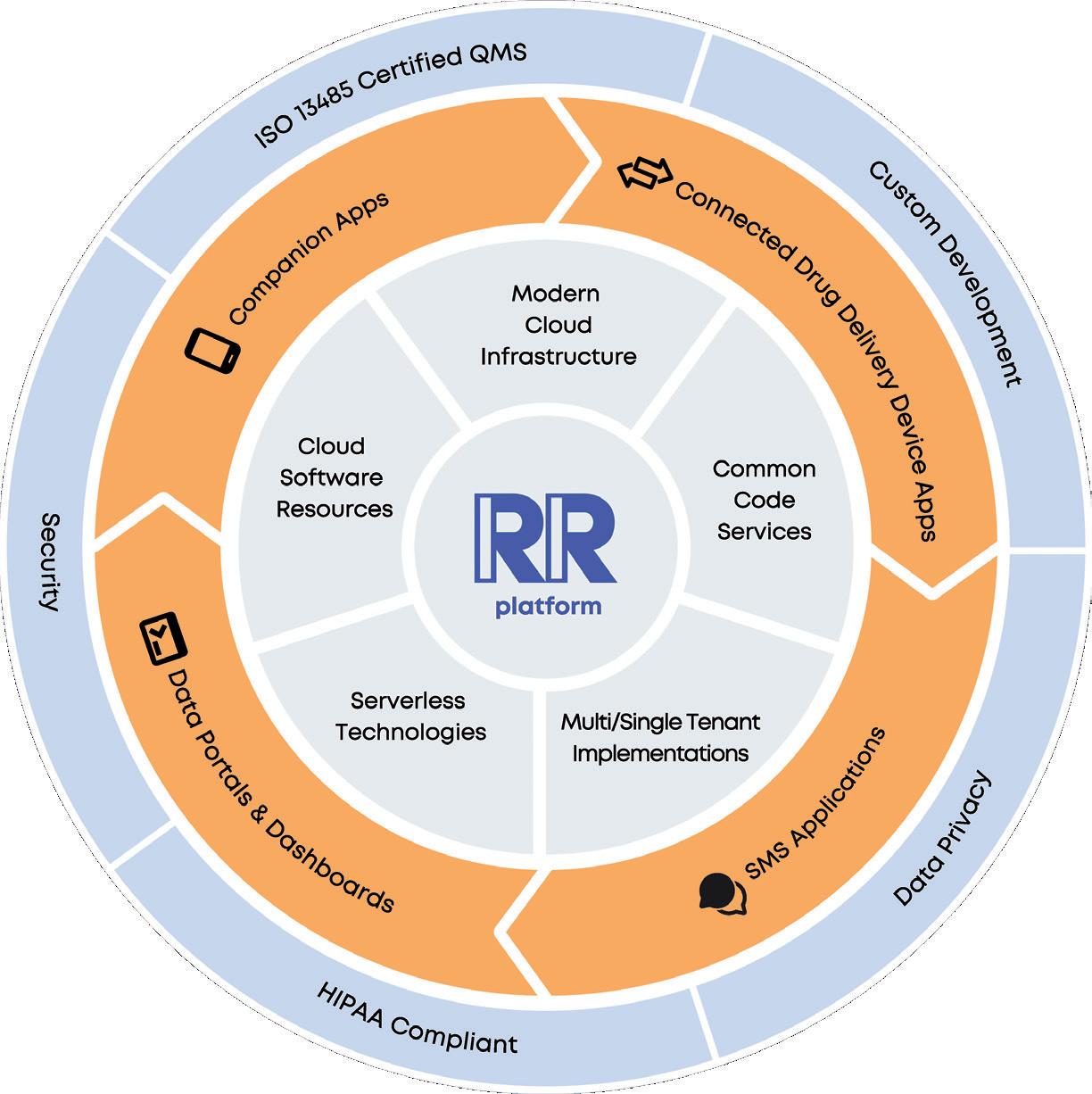
and “How do we help?”. That informs the company we want to be. We want to enable pharma to do more of this work.
One way I put things into context is that I’m a runner – I wear a running watch and look at my data after each run and in the morning after I’ve slept. I’m not looking for a lot of data, just a few key points that, because my watch gives me that information tied to certain things I’m doing, helps me make changes and improve. This is now commonplace on the consumer side of technology, and many aspects of medical devices also already do this. I think it’s natural that it should also happen with drug delivery devices, especially as biologics become more prevalent and more therapies move into the home. We see a role for SaMD solutions and connected devices and ways we can help.
QOutside of connectivity, especially in the injection device space, the industry has seen a shift towards platform products that use a common basis that is then tuned to the needs of a specific drug product – how important is that principle of building on a proven platform for SaMD products?
“We’ve moved beyond theory and into practice, actually having developed SaMD products that have been brought to market through major pharma partners.”
AIt’s critical. We have a robust, proven platform, which we’re doing good work with. And, because we understand the features and functionalities that help patients with their therapies, as well as the use cases and edge cases, each new assignment gives us new things to learn and add to the platform.
The last thing you want is a monolithic set of code boxing you in. Things are changing rapidly in software development. We offer a platform that allows our clients to iterate and improve solutions that grow with their needs, while working under design controls. It’s been quite a ride to watch technology speed along and then leverage it as a solution developer. What we’re doing in pharma now isn’t old technology; we’re using advanced tools to simplify the patient experience to help them get the most from their therapies.
QCan you give our readers some more detail about the Rip Road platform itself?
ABroadly, it’s a cloud-based platform for medication management solutions. We’ve prebuilt configurable modules for onboarding, medication management, device connectivity, symptom tracking and more – it’s a long list, which we are always expanding (Figure 1). As a result, our clients can deliver an engaging, branded patient experience in a companion app. Furthermore, we can deploy data portals and dashboards in a broader ecosystem. And of course, we protect and secure all data.
I want to highlight our connected device capabilities. We work with a range of medication delivery device types, including autoinjectors, on-body infusion devices, connected accessories and pen caps. We have developed software development kits (SDKs) for device integration and pre-built connectivity guidance and support flows, all to make connecting to new devices easier to set up and easier to manage. Our goal is to lower the barriers to doing device-app connectivity work and enable our clients, both device and pharma, to build solutions, iterate solutions and make changes under design controls as needed.
For example, we have clients on the device side where we’re building digital foundations so that they can sell a full-service offering, device and digital. On the other hand, we have clients on the pharma side where we’re setting up digital ecosystems so that they can learn, test and get into the digital space. We play a role between device and pharma, contributing to both sides. That’s one of the things that’s so exciting for us.
There really is a space down the middle where we can help lower the barriers and bring solutions to market.
QHow optimistic are you about the future of SaMD and companion applications? Why should pharma and biologic delivery device companies be excited?
AIt goes without saying that I’m excited about the future. We’re currently speaking and working with all parts of the industry, so we see where the interest lies to get this work going. There’s a greater appreciation on the pharma side than ever before that SaMD exists and can be done. That appreciation wasn’t there five years ago. The device side wants it to happen, but we need the business models to catch up, which is where we see an enabling role for Rip Road.
When I look at the industry and see advances on the device side to create better experiences for patients, such as personalised medicine and artificial intelligence (AI) improving R&D and operational aspects, I see SaMD as a complement to that. The
“There’s a greater appreciation on the pharma side than ever before that SaMD exists and can be done. That appreciation wasn’t there five years ago.”
device side of the pharma industry has been pursuing connectivity for many years and we’re doing a lot of that work today. The more we all get into it and start learning, the more this work will happen over time.
QWhat trends do you see in the industry with regards to connected devices, and what do you think are the ingredients for success with connectivity?
AFirst and most importantly, device technology is advancing. The second thing I’d mention is that,




at some point, there’s going to be an opportunity to feed some of the new AI datasets with actual patient information, but that’s probably a little way out yet.
In the present, one of the things we’ve seen and experienced with our clients is connectivity used in practice. That’s a really important development. Being able to show end-to-end connectivity from a device to an app to a back-end system is crucial for communicating what’s possible with this technology. Often, we’re asked to show a portal view of the data coming in, to which our response is, “Sure, but what do you want to see?” and frequently, the response is, “I don’t know, show me what’s possible.”
That reality had slowed things down because there hadn’t been a clear understanding of what was needed. So, part of the work we’re doing currently is building and demonstrating the technology so that our clients can now touch it and learn about it from hands-on experience. That’s a big deal and a real driver for more of this work happening. Because we’re so involved right now, we’re starting to see opportunities earlier in the development process and areas of potential interest that are worthy of deeper exploration. I’m really excited for that.
QIf our readers were to take away one thing about Rip Road from this interview, what would you want it to be?
AOne of the things I like to talk about is how we see ourselves as problem solvers. To do SaMD and connected device work successfully means mastering a wide range of elements – software, quality,
“One of the things we’ve seen and experienced with our clients is connectivity used in practice. That’s a really important development.”
“Despite the complexity of designing companion applications and SaMD for biologics and connected devices, these solutions must be simple to use.”
risk, devices, connectivity, data and more. There’s a lot to it, such as what data gets shared, why, and how to visualise it. It is hard to do this work well, and my team has this experience; we’ve been in the trenches now for several years, we feel strongly about being good problem-solvers and a good partner to help our clients understand the most important issues and options.
Despite the complexity of designing companion applications and SaMD for biologics and connected devices, these solutions must be simple to use. They have to be workable for patients and their caregivers. Some patients will need a lot of handholding, others will learn quickly and need less. How do we create solutions that adapt for each patient, are simple to use and provide value? Understanding that complexity and building solutions that meet patients where they are is absolutely critical.
QConnectivity in the healthcare industry is becoming increasingly important. How has Rip Road contributed to this evolving landscape, and can you share some examples that demonstrate the impact of connectivity on patient care?
AOur area of the industry is helping patents track their medications and providing them with the support tools they need to be successful on therapy. I remember a project a few years ago working with a calcitonin gene-related peptide (CGRP) drug, where our goal was to help patients track their medication injections and the number of migraine days they had in a month, as the labels for the new CGRP drugs all are about minimising
migraine days in a calendar month. We built a system for our pharma partner so their patients could track their medication usage and their migraine days, which meant that they could see how much of their month they were getting back, free of migraines, by being on the drug. My mother was put on a competing drug, and I asked her how she would know if it was working for her. She said, “I think my doctor will tell me.” Meanwhile, we’d already launched a product that allowed patients to have their own data delivered back to them in a way that told them something they didn’t know, empowering them when self-administering their drug. That’s a clear example of exactly what we’re trying to do – help patients have a better experience and make informed decisions when prescribed complex therapies. If we can do just that, we’ll be providing huge value.
Rip Road develops and manages digital companion apps for biologics and drug delivery devices. The company has pioneered a configurable platform for software as a medical device (SaMD) companion apps tailored for biologic medications. Rip Road is dedicated to elevating the patient experience, optimising adherence and building digital ecosystems for a connected healthcare world.
Eric Leven President and Chief Executive Officer
Rip Road, Inc 8 Wright Street Suite #107 Westport CT 06880
United States
T: 1 877 747 7623
E: info@riproad.com www.riproad.com
BRINGING YOU... MORE CONTENT THAN EVER!
Here, Damien McKeon, Senior Vice-President Global Alliances and Strategic Partnerships at Aptar Digital Health, and Sueyoung Yoon, Digital Solution Lead at Gerresheimer, discuss the trends driving interest in subcutaneous administration, the barriers to overcome and the characteristics of a patient-centric solution.
Ongoing advances in drug development are bringing to market highly targeted therapies for treating cancer or autoimmune disorders that can be administered subcutaneously instead of intravenously. Subcutaneous injection offers advantages that include faster and less invasive administration, and the potential to facilitate patient self-administration. That said, factors such as resistance to change, disruption of patient flows through the health system and the difficulty of addressing highly variable side effects may stand in the way of adoption.
That is why patient centricity is an important consideration for any organisation developing therapies for selfadministration. Beyond the device itself, pharmaceutical companies should seek to support patients by leveraging digital health solutions to guide them through self-administration, symptom management and communication with their healthcare providers. Building intuitive and scalable digital health solutions is critical to overcoming common barriers to self administration and bringing valuable therapies to more patients in need.
Three important trends are driving both care delivery by healthcare providers –and pharmaceutical companies to develop subcutaneous administration modes. Here, subcutaneous refers to the injection of a medication into the fatty tissue just below the skin, most commonly on upper arms or thighs or on the belly between the ribs and hips.1
First is an improvement in clinical efficacy at a lower cost. Subcutaneous injections enter the body through fatty issue, not the bloodstream, which makes administration less invasive and a preferred administrative mode for patients.2 Dosages are smaller for subcutaneous injections compared with intravenous, which reduces the likelihood of severe side effects. Finally, subcutaneous doses can be administered in minutes, compared with hours for intravenous injections.
Closely linked to clinical efficacy is the goal of providing a more patient-centred care experience. Along with the potential
“Building intuitive and scalable digital health solutions is critical to overcoming common barriers to self-administration and bringing valuable therapies to more patients in need.”

Damien McKeon
Senior Vice-President Global Alliances and Strategic Partnerships
T: +33 6 24 55 41 33
E: damien.mckeon@aptar.com
Aptar Digital Health
12-14 Rue Louis Blériot 92500 Rueil-Malmaison
France
www.aptardigitalhealth.com

Sueyoung Yoon
Digital Solution Lead
T: +41 6254 41655
E: sueyoung.yoon@gerresheimer.com
Gerresheimer
Solothurnerstrasse 235
CH 4600
Olten
Switzerland
www.gerresheimer.com
for a better physical response to treatment, subcutaneous administration may reduce the amount of time patients need to spend in a clinical setting. Plus, as treatment progresses, patients may become more comfortable with self-administration in their own homes, with clinical visits reserved for routine follow-ups or acute care needs. For many patients, these improvements represent a stark contrast to the hours they spend in clinic receiving an intravenous injection and the negative side effects they experience3 – common factors that may influence a patient to interrupt or discontinue treatment.
The third trend is increased interest in reformulating and repositioning existing immunotherapies. Developing new drugs is costly, time-consuming and risky. This is especially true for rare conditions – the complexity of drug development, coupled with the small patient population impacted, can lead to very high market prices for a pharmaceutical company to achieve a return on investment. The process of reformulating and repositioning previously approved therapies for new indications or new forms of administration presents fewer obstacles than de novo development.4
Although these trends present clear advantages to pharmaceutical companies, healthcare providers and patients alike, there are four main reasons for
stakeholders to be cautious about the transition to subcutaneous administration:
1. The reorganisation of patient pathways: Patients receiving subcutaneous injections may not need to visit a hospital’s infusion centre. As a result, healthcare providers may have fewer opportunities to see patients in person and therefore may have less insight into how patients are progressing. More broadly, for healthcare providers operating under volume-based payment models, such as in the US, a decrease in foot traffic into an infusion centre may be perceived as a business threat due to diminishing revenue.
2. A reluctance to change administration methods: Both patients and healthcare providers may be unwilling to transition away from intravenous injections. Amid something so familiar – the visit to the clinic, the administration process, the effectiveness of the treatment and the side effects – the drawbacks of a new treatment experience may be perceived to outweigh the benefits.
3. The potential unpredictability of toxicity: The side effects of subcutaneous injections can be difficult to predict. They may take longer to present, as the therapy does not enter the bloodstream immediately and can vary significantly depending on mechanism of actions. Some patients may choose to discontinue subcutaneous injections altogether, while those who stay on subcutaneous treatments will require close home-based monitoring of symptoms and side effects.
4. A significant increase in data for healthcare providers to handle : Monitoring patients’ symptoms and side effects generates a large volume of data – both structured data from devices and unstructured data from patientreported outcomes. Healthcare providers may be reluctant to receive, process and view this data, especially if they are used to directly observing patients in an infusion centre in the hours following an intravenous injection.
While these barriers are by no means insurmountable, they do suggest pharmaceutical companies need to take a thoughtful approach to drug development. In addition to the therapeutic itself, they need to consider how and where it will be administered, what data needs to be gathered during and after administration, and how that data should be presented to healthcare providers.
The key to an approach that considers how a drug is administered and how healthcare providers engage with it is patient centricity. Pharmaceutical companies need to frame subcutaneous administration from the perspective of how it can benefit patients. Critically, this approach must apply not just to the workflows and solutions they develop for patients; it should also guide how they deliver data, insight and support to healthcare providers.
Reorganisation of patient pathways
Resistance to change
Ensure providers remain in the loop, reduce cost of unplanned hospital visits5
Unpredictable toxicity Track symptoms and side effects in real time
Get providers up to speed, minimise unproductive time
Help patients know what to expect, when to seek help
Influx of data to providers Share the most relevant data in a usable format Show providers how to act on data and insights
Empower patients to do more on their own Insight into which patients need care only clinic can provide
Devote fewer resources to providing low-acuity care
Where appropriate, help patients address symptoms on their own
Let providers focus on patients who cannot meet needs on their own
Better longitudinal view of patient outcomes
Gain long-term view of efficacy and side effects to inform future care decisions
Help providers address concerns, not just observe them
There are four general features of a patient-centric solution for subcutaneous administration:
1. Remote monitoring lets healthcare providers track patients’ adherence to treatments and/or symptoms from home. This offers insight into efficacy as well as potential side effects while reducing the expense and carbon footprint of frequent patient trips to the clinic.
2. Training and onboarding guides patients and clinical staff through the administration process. Educational materials can help to explain the type and severity of anticipated side effects, while on-demand training offers ease of use and can support patients during their moments of need.
3. Self-management support, such as video tutorials and subcutaneous injection training devices, can build patients’ confidence in self-administration. This can improve adherence as well as clinical outcomes, which together have a downstream effect of requiring fewer resources to deliver high-quality care.
4. Smarter, more useful data give patients and healthcare providers actionable insights, relieving them of the burden of searching through large, often unstructured datasets for relevant pieces of information.
Table 1 (see previous page) summarises how each feature of a patient-centric solution helps to address a different aspect of the challenges of subcutaneous administration. Ultimately, a patient-centric solution for self-administration is one tha is safe (regulated as a medical device), convenient (simple to use and insightful) and personalised (tailored guidance and
resources). That is why the partnership between Gerresheimer and Aptar Digital Health is important for the industry. Integrating state-of-the-art, sustainable drug delivery devices with software platforms for remote monitoring and patient selfmanagement can provide an extension of the clinic within the patient's home, provide greater insight into the progression of treatment and improve the overall care experience.
A successful patient-centric solution for subcutaneous administration can lead to improvements in the patient experience, medication adherence, clinical outcomes and overall quality of life. In developing such solutions, however, pharmaceutical companies and their technology partners must ensure that patients can make the connection between how they use the solution and how they benefit from it.
If patients feel as though they put more into a solution than they get out of it, they are likely to abandon it. This could result from usability issues such as tedious manual data entry – or it could stem from workflows that inhibit a patient’s ability to view their personal records or other resources, communicate with their healthcare providers or otherwise gain insight into their health. On the other hand, if patients feel that a solution is helping them maintain a relationship with their healthcare providers, stay informed about their condition or improve their health, they will likely continue to use it.
One of the most important steps in ensuring this happens is to include patients in the product development process.
This should begin at the ideation stage and continue through insights research and validation. Additionally, this should include both formative and summative human factors studies – which, it should be noted, are described in the regulation to be followed by both the US and the European Union.6 Patients’ interactions should not be limited to user experience and human factors testing; security, legal and engineering teams will all benefit from understanding how patients expect to use a solution.
Such a high degree of patient involvement in development can help to ensure a digital health solution can support care pathways in the clinical as well as the “real-world” setting. This will be critical as subcutaneous injections continue to transition to the home-care setting. Meanwhile, ongoing user testing and feasibility testing – even after devices and their accompanying digital solutions have been approved and launched – helps to ensure solutions are intuitive for all patients, particularly those previously unfamiliar with injection devices or mobile applications.
In January 2024, Aptar Digital Health and Gerresheimer announced a partnership to develop tailored solutions to support patients and healthcare providers in subcutaneous cancer therapy administration and management (Figure 1). The partnership brings together Aptar Digital Health’s expertise in developing software as a medical device with Gerresheimer's innovative on-body device for subcutaneous delivery of large biologic molecules, Gx SensAir®

“The
partnership brings together Aptar Digital Health’s expertise in developing software as a medical device with Gerresheimer's innovative on-body device for subcutaneous delivery of large biologic molecules, Gx SensAir®.”
The integrated solution to be developed as part of this collaboration will integrate Gerresheimer's Gx SensAir® with the Aptar Digital Health software platform. This will allow patients to receive realtime, actionable recommendations as they use the Gx SensAir® and as they track and manage their symptoms. It will also facilitate communication with patients’ healthcare providers, allowing them to stay connected with their care teams and helping to reduce their anxiety about self-administration and treatment. Critically, the solution can integrate with dozens of electronic health record systems, enabling healthcare providers to monitor and engage with patients using familiar clinical workflows.
Initially, the integrated solution will be used for therapies such as PD-1/PDL-1 and CTLA-4. These immune checkpoint therapies are proven to be effective at treating certain types of cancer, with similar survival outcomes7,8 and less severe side effects9,10 compared with traditional treatments. As
is common with immunotherapies, patients often need training. The combination of easy-to-use devices and robust digital guidance and support is positioned to improve the patient’s experience, so they remain on therapies longer, achieve better clinical outcomes and have improved quality of life.11
Aptar Digital Health and Gerresheimer are confident that this initiative can scale to additional therapies delivered subcutaneously, for cancer treatments as well as other chronic conditions. This will allow many more patients to experience the benefits of subcutaneous administration, and it will have the additional upside of removing much of the treatment burden from care delivery organisations. With both patients and healthcare providers benefiting from the level of support available from selfadministration enhanced by digital health, the time is right for broader adoption of subcutaneous injection.
Aptar Digital Health creates end-to-end solutions to enhance patient experiences every day, leveraging a holistic ecosystem of digital interventions. Amplified by portfolio of products and solutions, Aptar Digital Health’s offering combines mobile and web apps, connected drug delivery systems, onboarding, training and advanced data analytics services to actively empower patients and create a positive treatment journey. Aptar Pharma's Digital Health division is part of AptarGroup, Inc, a global leader in drug and consumer product dosing, dispensing and protection technologies.
Gerresheimer is an innovative system and solution provider and global partner for the pharma, biotech and cosmetic industries. The company offers a comprehensive portfolio of pharmaceutical containment solutions, drug delivery systems and medical devices, as well as solutions for the health industry. The product range includes digital solutions for therapy support, medication pumps, syringes, pens, autoinjectors, inhalers, vials, ampoules, tablet containers and infusion, dropper and syrup bottles, among others. Gerresheimer ensures the safe delivery and reliable administration of drugs to the patient. With 36 production sites in 16 countries in Europe, the US and Asia, Gerresheimer has a global presence and produces locally for regional markets.
1. “Subcutaneous (SQ) injections.” MedlinePlus, Oct 2023.
2. Stoner KL et al, “Intravenous versus Subcutaneous Drug Administration. Which Do Patients Prefer? A Systematic Review”. Patient, Jul 2014.
3. Das S, Johnson DB, “Immunerelated adverse events and anti-tumor efficacy of immune checkpoint inhibitors”.
J Immunother Cancer, 2019, Vol 7(1), Article 306.
4. Murteira S et al, “Drug reformulations and repositioning in pharmaceutical industry and its impact on market access: reassessment of nomenclature”.
J Market Access Health Policy, Vol 1, Aug 2013.
www.ondrugdelivery.com/subscribe
5. "All-Cause Admissions and Readmissions 2017 Technical Report”. National Quality Forum, Sep 2017.
6. “IEC 62366-1:2015/Amd 1:2020: Medical devices – Part 1: Application of
usability engineering to medical devices – Amendment 1”. ISO, Jul 2020.
7. Xu Y et al, “The efficacy and safety of immune checkpoint inhibitor in patients with relapsed small-cell lung cancer:
Damien McKeon is Senior Vice-President Global Alliances and Strategic Partnerships at Aptar Digital Health. With more than 20 years of experience in the industry, he began his career in frontline clinical healthcare, including the UK NHS and Boots, and later worked in a variety of operational, customer-facing and leadership roles within the AXA Group. In 2008, Mr McKeon joined Voluntis (now Aptar Digital Health) as Head of Quality & Regulatory. Now part of Aptar Digital Health’s Commercial Team, Mr McKeon is responsible for relationship management with Aptar Digital Health’s key accounts, as well as strategic partnerships.
Sueyoung Yoon is Digital Solution Lead at Gerresheimer. With over 15 years of experience in the healthcare industry, Ms Yoon began her career managing clinical operations at institutions including the Catholic Medical Center and Providence Health & Services. Her journey continued in product marketing and management roles at Philips and Abbott Diagnostics, where she spearheaded product commercialisation and new business development. In her current role, Ms Yoon focuses on expanding Gerresheimer’s digital solutions portfolio.
A systematic review and metaanalysis”. J Clin Pharm Ther, 2022, Vol 47, pp 421–429.
8. Fitzsimmons TS et al, “Immune checkpoint inhibitors efficacy across solid cancers and the utility of PD-L1 as a biomarker of response: a systematic review and meta-analysis”. Front Med, 2023, Vol 10, pp 1 –14.
9. Nishijima TF et al, “Safety and Tolerability of PD-1/PD-L1 Inhibitors Compared with Chemotherapy in Patients with Advanced Cancer: A MetaAnalysis”. Oncologist, 2017, Vol 22(4), pp 470–479.
10. Jaber N, “Study Details Long-Term Side Effects of Immune Checkpoint Inhibitors”. US NIH National Cancer Institute, April 2021.
11. Aapro M et al, “Digital health for optimal supportive care in oncology: benefits, limits, and future perspectives”. Support Care Cancer, 2020, Vol 28(10), pp 4589–4612.
















Aptar Digital Health creates end-to-end solutions that empower patients to actively engage in their treatment and help deliver superior experiences.












Find out how Aptar Digital Health can support you in your digital health initiatives at aptardigitalhealth.com






















In this article, Carola Fuchs, PhD, Senior Director e-Health Solutions, and Rupa Ram, Senior Product Manager e-Health Solutions, both at PARI, discuss the development of PARI’s new eFlow Integrated Nebuliser and the PARI Breath Guide app, and how integrating these into the PARI Connect Platform will stimulate increased adherence to inhaled therapy and, therefore, improved therapeutic outcomes.
REGULAR, CORRECT INHALATION IS THE FOUNDATION FOR OPTIMAL CLINICAL OUTCOMES
Increasing patient adherence to long-term treatment is a beneficial and powerful factor for optimising the effectiveness of therapy in chronic diseases. Better adherence has been shown to reduce disease exacerbations and the need for emergency therapy or further medical intervention, as well as improve clinical outcomes.1,2 However, around half of patients with chronic illness fail to take their medications as prescribed,3,4 increasing the risk of their disease worsening.5
Patients with chronic respiratory diseases often rely on inhaled therapies. For these patients, successful treatment not only requires efficacious drugs, but also efficient delivery of the drug to the lungs and full patient adherence. Drug delivery to the lungs can be optimised by using a highperformance nebuliser combined with good inhalation technique.6 Furthermore, adherence can be improved if patient acceptance of the device is high.7 So how can both be ensured?
In recent years, the use of digital tools has rapidly gathered momentum across all areas of medicine.8 The scope and potential of these
“Patient
monitoring and increasing adherence have been a focus for PARI during the development of the PARI Connect Platform.”
tools is vast, offering personalised support and data-driven decision making, increasing patient satisfaction and adherence and, ultimately, improving therapy outcomes.9 For patients with chronic respiratory diseases, digital tools can provide transformative benefits that maximise therapeutic success by assisting patients in using their nebuliser correctly, such as by providing feedback on each treatment and sharing real-life clinical data with healthcare professionals.
Patient monitoring and increasing adherence have been a focus for PARI during the development of the PARI Connect Platform. The platform has now been expanded to include unique features that aim to improve patients’ inhalation technique and promote device acceptance. The platform includes the PARI Breath

Dr Carola Fuchs
Senior Director e-Health Solutions E: carola.fuchs@pari.com

Rupa Ram
Senior Product Manager e-Health Solutions E: rupa.ram@pari.com
PARI Medical Holding GmbH Moosstr 3 82319 Starnberg Germany
www.pari.com
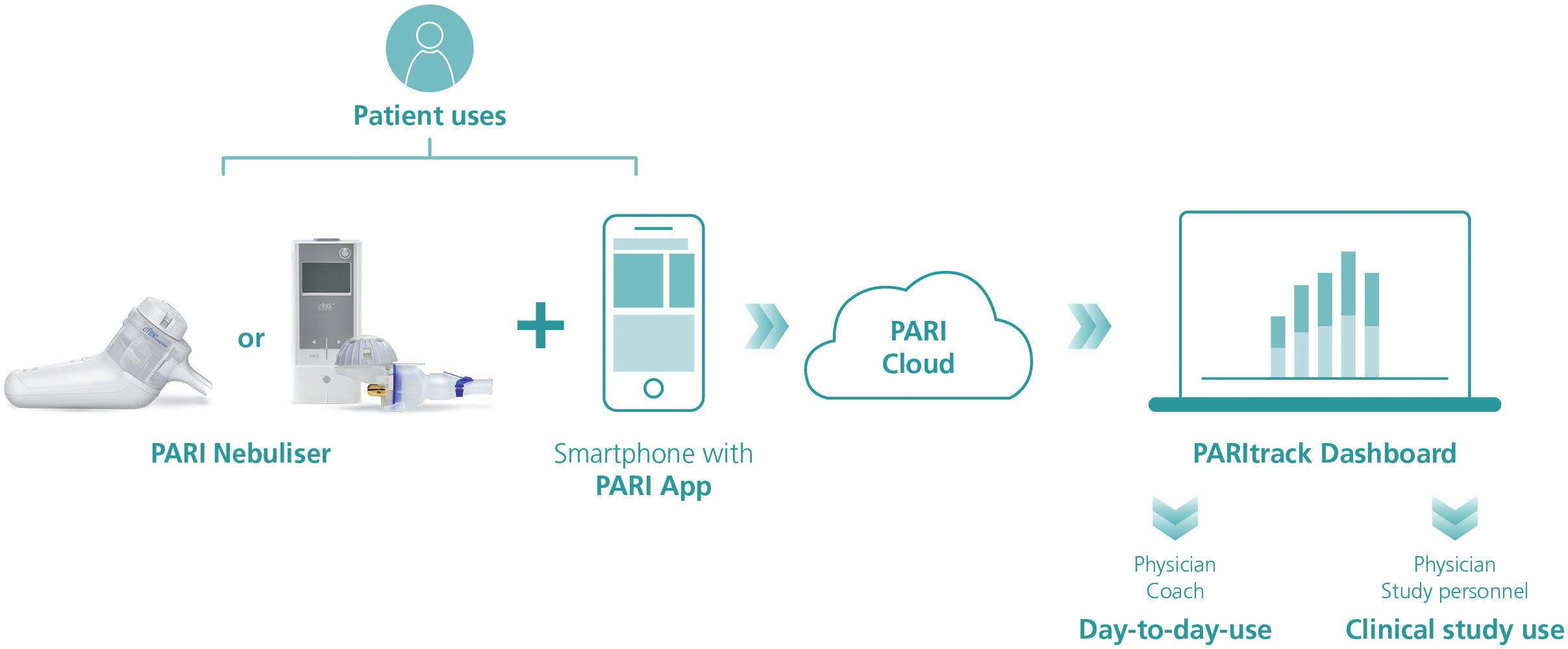
Guide app, specially developed for the new eFlow® Integrated Nebuliser and designed to improve both usability and therapy support.
Since 2015, PARI has offered monitoring features for its customised vibrating membrane nebulisers for patients with chronic respiratory diseases. The eTrack® Controller is a Bluetooth- and WiFi-ready controller for the eFlow® technology nebuliser platform that, in addition to operating the nebulisation, allows automatic transfer of inhalation data to secure cloud storage without the need for the patient to actively transfer the data after each treatment.
Within the PARI Connect Platform, patients can use one of PARI’s apps to transfer their nebuliser data to the PARI Cloud for subsequent analysis and visualisation. These apps are coupled with the PARItrack® Dashboard, which aggregates and displays the data for physicians, caregivers and/or study personnel (Figure 1). Together, these components offer transparent data for both patients and physicians on the use of and adherence to nebuliser therapy, giving them the tools to intervene, adapt and optimise therapy outcomes.
The PARI Connect® app and PARItrack® Dashboard
The PARI Connect® app has been available since 2021 and offers several features to support patients with their therapy management and to document adherence. These include personally adjustable therapy
reminders, graphical visualisation of therapy data to see long-term trends, automatic messages when adherence decreases and support from family and friends through a “buddy system”.
The PARItrack® Dashboard is a web portal that provides physicians or study personnel with easy access to aggregated patient data in graphical and tabular form. The system’s focus is on therapy adherence, but also includes patients’ vital parameters, creating a strong basis for patient support both in day-to-day use and in clinical studies.
The potential of the PARI Connect Platform has been demonstrated, with improved patient adherence shown in both clinical trials of new drug products and real-world settings.
Over the last nine years, around 5,000 patients have used the eTrack® Controller together with their eFlow® Technology nebulisers in clinical trial settings, alongside 13 partners across Europe, the UK, the US, Israel, Australia and Canada. Within these trials, data were shared according to the study protocol, enabling physicians to contact patients with poor
“Over the last nine years, around 5,000 patients have used the eTrack® Controller together with their eFlow® Technology nebulisers in clinical trial settings.”
adherence to offer support and ensure correct and regular nebuliser use. Mean adherence rates were between 76% and 99% for studies with durations of up to two years and four to eight weeks, respectively.10 The high adherence rates seen in these studies not only provide the best opportunity for maximising treatment efficacy, but also allow accurate evaluation of study outcomes and may lead to savings in cost and time due to a reduction in the number of patients needed to be recruited.11
Additionally, studies in the UK and Germany investigating the impact of adherence support on day-to-day inhaler use have shown substantial increases in adherence where patients and physicians have access to data and analysis facilitating appropriate self-management and support.12–14 In the study sponsored by the German Innovation Fund investigating telemonitoring and coaching, the PARI Connect® app was used by patients with cystic fibrosis, together with other interventions. The interim results showed that therapy adherence was significantly higher in the patient group using the app than the control group without the app. This adherence increase was stable throughout the evaluated duration of 12 months. Notably, adherence has now been established as a key quality indicator in cystic fibrosis care by the UK NHS.
In recent years, practical experience with the PARI Connect Platform in realworld settings has grown, showing that the improvements in adherence seen in clinical trials also translate to real-world settings.10 The new eFlow Integrated Nebuliser is now becoming part of the PARI Connect Platform, compatible with the PARI Cloud and PARItrack Dashboard, leveraging the
company’s experience in adherence support and offering a new dimension of therapy support with additional real-time breath-guiding during each inhalation.
The role of digital tools in supporting the correct breathing pattern is pivotal for optimising both the drug delivery to the lungs and patients’ acceptance of the device. A long inhalation phase is ideal, as it allows low peak inspiratory flow, reducing aerosol droplet impaction in the upper airways and promoting a deep breath to increase drug deposition in the lungs.
PARI’s experience and research over the last decade has shown that feedback on patients’ inhalation technique is important, both for reassurance and for guidance on required improvements. Taking this into consideration, PARI has incorporated an innovative breathguiding feature into the eFlow® Integrated Nebuliser, which guides the patient to inhale slowly and deeply (Figure 2).

Finally, further feedback is offered simultaneously via the new connected PARI Breath Guide app, which provides a helpful real-time visualisation of the inhalation, guiding the patient to inhale both slowly and deeply, as well as informing them whether the therapy has been performed correctly and, if necessary, how to improve. This breathguiding function is provided in addition to the established adherence visualisation.
The new PARI Breath Guide app offers guidance to the patient before, during and after treatment.
Before treatment, the patient is provided with a step-by-step explanation of how to use the eFlow® Integrated Nebuliser for optimal results (Figures 3). Since the eFlow Integrated Nebuliser is used as a drug-device combination product, there is potential to integrate further pharma-partner-specific content here in the future.
The breath-guiding concept comprises three components that work together to optimise drug deposition, reduce variability and reduce treatment time, ultimately promoting high patient satisfaction and adherence. The first of these is a unique built-in flow resistance called a “fluidic diode”. Through the specific geometry of the fluidic diode, the flow resistance is higher for inhalation than for exhalation. This limits the peak inspiratory flow, thereby increasing inspiration duration, reducing aerosol losses in the throat and increasing the residence time of aerosol droplets in the lungs to enhance sedimentation, all while also keeping treatment time to a minimum. With its reduced resistance during exhalation, this approach also enables exhalation through the nebuliser for greater patient comfort, steadiness and acceptance.
The second component is the nebuliser’s user interface, which directly provides intuitive instructions via an illumination in the patient-facing upper part of the nebuliser and a vibration of the lower part, which is where the patient holds the device during inhalation. These two feedback
mechanisms effectively train patients to breathe correctly during inhalation. This is achieved using a pressure sensor that collects real-time data from the inspiratory flow and translates it into haptic and visual signals. These inform the user whenever the inhaled flow rate is too high, guiding them to inhale more slowly.
During inhalation, the app uses real-time inhalation data to provide visual guidance (Figure 4). The visualisation shows how the lung fills with aerosol based on the individually measured inhaled volume. This feature aims to motivate patients to inhale more deeply and for longer within their own capacity and has been shown to be very popular with patients in human factors studies.


The app also informs the patient immediately if they are inhaling too quickly with a significant colour change of the whole display, corresponding to the illumination of the nebuliser device itself. While the peak inspiratory flow threshold is set in the device and the app, the guidance on inhaled volume in the app dynamically adapts according to the lung capacity of the individual patient. As such, patients with the ability to achieve a high inhaled volume are motivated to breathe longer and more deeply, whereas severely ill patients who may not be able to reach such a volume are not led to become frustrated or exhausted. The dynamic adaptation also accounts for different lung sizes and daily changes in lung health and breathing capacity.
At the end of each administration, the patient receives feedback on the inhalation via a detailed inhalation report to help them improve their breathing technique, where needed. The report considers the peak inspiratory flow, inhaled volume, uniformity and completion of the inhalation. The report also includes tips on what to improve and allows the patient to study their breathing pattern.
Completion of the inhalation is considered the first priority, followed by the peak inspiratory flow and inhaled volume. If these elements were performed successfully, the report will also encourage the patient to inhale more evenly. The inhalation report is created within the nebuliser device, independent of the use of the app during inhalation. These reports can
help patients to continually improve and inform their physicians via the PARItrack Dashboard on their success or need for further training.
THE BENEFITS OF THE PARI CONNECT PLATFORM: PATIENTS WILL HAVE THE FINAL SAY
Over 2,300 patients are currently connected to the PARI Connect Platform worldwide. Adding the eFlow Integrated Nebuliser with the PARI Breath Guide app to the platform will be invaluable in terms of improving patient engagement (Figure 5). The adherence data speak for themselves, and usability tests have shown that the user experience is enhanced by the combination of the eFlow Integrated Nebuliser, with its real-time breath-guiding features, and the PARI Breath Guide app. Furthermore, preliminary data from initial usability tests with patients show that the breath-guiding features have a positive influence on patients’ inhalation technique, with the PARI Breath Guide app additionally enhancing patient satisfaction and reassurance.
With more than 20 years of experience with its eFlow Technology platform and almost 10 years in patient-centric development and expansion of the PARI Connect Platform with proven adherence support, PARI believes that the new eFlow Integrated Nebuliser with breath-guiding functionality integrated into the PARI Connect Platform can, ultimately, improve clinical outcomes via correct, regular and efficient drug delivery for patients with chronic respiratory diseases.
Martin Guppy, PhD, Medical Writer, participated in the writing and proofreading of the manuscript.
PARI specialises in the development of aerosol delivery devices. PARI Pharma focuses on pharma licensing partnerships and offers under one roof a complete device and service portfolio comprising customisable nebulisers based on eFlow Technology, development and analytical know-how,
“Adding the eFlow Integrated Nebuliser with the PARI Breath Guide app to the platform will be invaluable in terms of improving patient engagement.”

as well as extensive manufacturing and supply chain capabilities. eFlow Technology is a vibrating membrane nebuliser platform that provides optimised aerosol performance for a wide range of drug formulations and is available with short lead times. eFlow Technology devices are designed to reduce the burden of treatment for patients with severe respiratory diseases. As of today, five commercial drug-specific eFlow Technology nebulisers are available in North America, Europe and Japan.
1. Lomas P, “Enhancing adherence to inhaled therapies in cystic fibrosis”. Ther Adv Respir Dis, 2014, Vol 8(2), pp 39–47.
2. Daniels T et al, “613 Exploring FEV1 response by co-adherence to inhaled therapies in people with cystic fibrosis taking elexacaftortezacaftor-ivacaftor: year 1 of the NEEMO-CFHealthHub learning health system evaluation”. J Cyst Fibros, 2023, Vol 22, pp S326–S327.
3. Lee JK, Grace KA, Taylor AJ, “Effect of a pharmacy care program on medication adherence and persistence, blood pressure, and lowdensity lipoprotein cholesterol: a randomized controlled trial”. JAMA, 2006, Vol 296(21), pp 2563–2571.
4. “Adherence to long-term therapies: evidence for action”. WHO, Sep 2003.
5. Osterberg L, Blaschke T, “Adherence to medication”. N Engl J Med, 2005, Vol 353(5), pp 487–497.
6. Rogliani P et al, “Optimizing drug delivery in COPD: The role of inhaler devices”. Respir Med, 2017, Vol 124, pp 6–14.
Carola Fuchs, PhD, leads the e-Health department at PARI and is responsible for development, lifecycle management, business development and management of all e-Health activities for the PARI Group. She joined PARI in 2006 after working for Sanofi and a biotech start-up, starting her work on connected devices as a project leader at PARI Pharma. Since then, Dr Fuchs has established digital solutions and an international network of contacts in the field of digital health. She has a master’s degree in Mechanical Engineering from the Technical University of Munich (Germany) and a PhD from the Technical University of Hamburg-Harburg (Germany).
Rupa Ram joined PARI in 2023, leading app development for the PARI Breath Guide and taking responsibility for PARI’s e-Health digital innovation, strategy and roadmap. Before joining PARI, Ms Ram led teams focusing on new digital products, digitalisation and change projects across several industries, as well as co-founding a biotech start-up. Ms Ram earned a master’s degree in Biochemistry from the University of Frankfurt (Germany) and did research at the Rockerfeller University (NY, US) on cystic fibrosis transmembrane conductance regulator and sodium/potassium pumps.
7. Lavorini F, Fontana GA, “Inhaler technique and patient’s preference for dry powder inhaler devices”. Expert Opin Drug Deliv, 2014, Vol 11(1), pp 1–3.
8. “Global strategy on digital health 2020-2025”. WHO, Aug 2021.
9. Sleurs K, “Mobile health tools for the management of chronic respiratory diseases”. Allergy, 2019, Vol 74(7), pp 1292–1306.
10. Koehler Y, Fuchs C, “Monitoring Nebuliser Usage & Lung Function in Clinical Trials”. ONdrugDelivery, Issue 87 (Jun 2018), pp 66–70.
11. Fiebig D, “Late Breaking Abstract –Making therapy behaviour transparent by using an app and a Bluetooth® enabled electronic nebulizer, was found to increase therapy adherence”. Oral Presentation, The ERS
International Congress, Milan, 2023.
12. Thee S, “A multi-centre, randomized, controlled trial on coaching and telemonitoring in patients with cystic fibrosis: conneCT CF”. BMC Pulm Med, 2021, Vol 21(1), Article 131.
13. Wildman MJ et al, “An intervention to support adherence to inhaled medication in adults with cystic fibrosis: the ACtiF research programme including RCT”. Southampton (UK): NIHR Journals Library, Oct 2021.
14. Wildman MJ et al, “Self-management intervention to reduce pulmonary exacerbations by supporting treatment adherence in adults with cystic fibrosis: a randomised controlled trial”. Thorax, 2022, Vol 77(5), pp 461–469.

CPHI Milan celebrates 35 years of pharma excellence – join the next generation of leaders, innovators & trailblazers.
Register now
8-10 October 2024
Fira Milano, Italy

At the heart of Pharma

In this piece, Frank Leipold, Vice-President Product Management at Haselmeier, and Bernard Vrijens, PhD, Chief Executive Officer & Scientific Lead at AARDEX Group, discuss the companies’ collaboration to develop the MEMS Smart Cap – a smart solution for data collection during clinical trials to enable an accurate assessment of participant nonadherence.
Nonadherence is one of the most critical challenges facing clinical trials – as many as 50% of patients are reported not to adhere to the treatment regimens laid out in trial protocols.1 Trial participants failing to take their medications as specified can lead to biased results, which can lead to significant delays and additional costs. This challenge is compounded by the difficulties in recruiting participants, especially for rare and orphan diseases, and the ever-present pressure to reduce time to market. To meet this challenge, Haselmeier, a medmix Brand, and AARDEX Group have joined forces to optimise dose exposure and speed up clinical trials.
How can nonadherence be tackled? Often, it simply isn’t, with many trials relying on self-reporting, that fails to detect it. It is clear that a better approach is required, as nonadherence reduces a study’s ability to determine the new drug’s doseresponse relationship. In turn, this leads to longer trials that require larger patient sample sizes and place unnecessary burdens on healthcare systems. In the worst-case scenario, a pharma company could decide to give up on a life-saving drug, based on weak but flawed data.
“Trial participants failing to take their medications as specified can lead to biased results, which can lead to significant delays and additional costs.”
These unmet challenges bite particularly hard when coupled with another trend in drug development: drugs being developed to treat increasingly rare indications. According to data from Trialtrove, clinical trials for drugs targeting rare or orphan diseases have gone from 1,236 in 2010 to 2,335 in 2022 – an 89% increase (Figure 1). Currently, there is a great deal of interest across the industry in using biologic medications to treat new disease areas, with many small biotech companies starting up with a tight focus on a specific disease or area, such as the central nervous system. However, these drugs are often difficult and expensive to manufacture, as well as challenging to deliver.
The development of drugs for rare diseases is challenging and requires different development and regulatory approaches. These drugs qualify often for accelerated approval based on limited evidence and small sample size. Confirmatory evidence is then required from post-approval pragmatic

Frank Leipold Vice-President Product Management E: frank.leipold@medmix.com
Haselmeier GmbH
Schelmenwasenstraße 14 70567 Stuttgart Germany
www.haselmeier.com

Dr Bernard Vrijens Chief Executive Officer & Scientific Lead E: bernard.vrijens@aardexgroup.com
AARDEX Group SA 15/1, Rue Bois St Jean 4102 Seraing
Belgium
www.aardexgroup.com
“Decentralised clinical trials have become a necessity for reaching minimum recruitment targets, but this too makes it harder to monitor and enforce adherence.”
trials in which reliable information on drug exposure is required for robust assessment of efficacy and safety in real-world settings.
Biologics are most frequently administered via the parenteral route, being injected either intramuscularly or subcutaneously to avoid first-pass metabolism in the gastrointestinal tract damaging the fragile proteins. However, these injections often require long hold times or larger needles to handle the volumes and viscosities of biologic formulations, which makes these injections unpleasant for patients. This can increase the chance of patients becoming nonadherent –especially in a clinical trial where they are uncertain as to the therapeutic benefit and safety of the medication.
It then becomes clear how these two trends interact. With biologics targeting rare diseases with increasingly small patient populations, the difficulty in recruiting for clinical trials increases in tandem, along with the need to retain them. Decentralised clinical trials have become a necessity for reaching minimum recruitment targets,
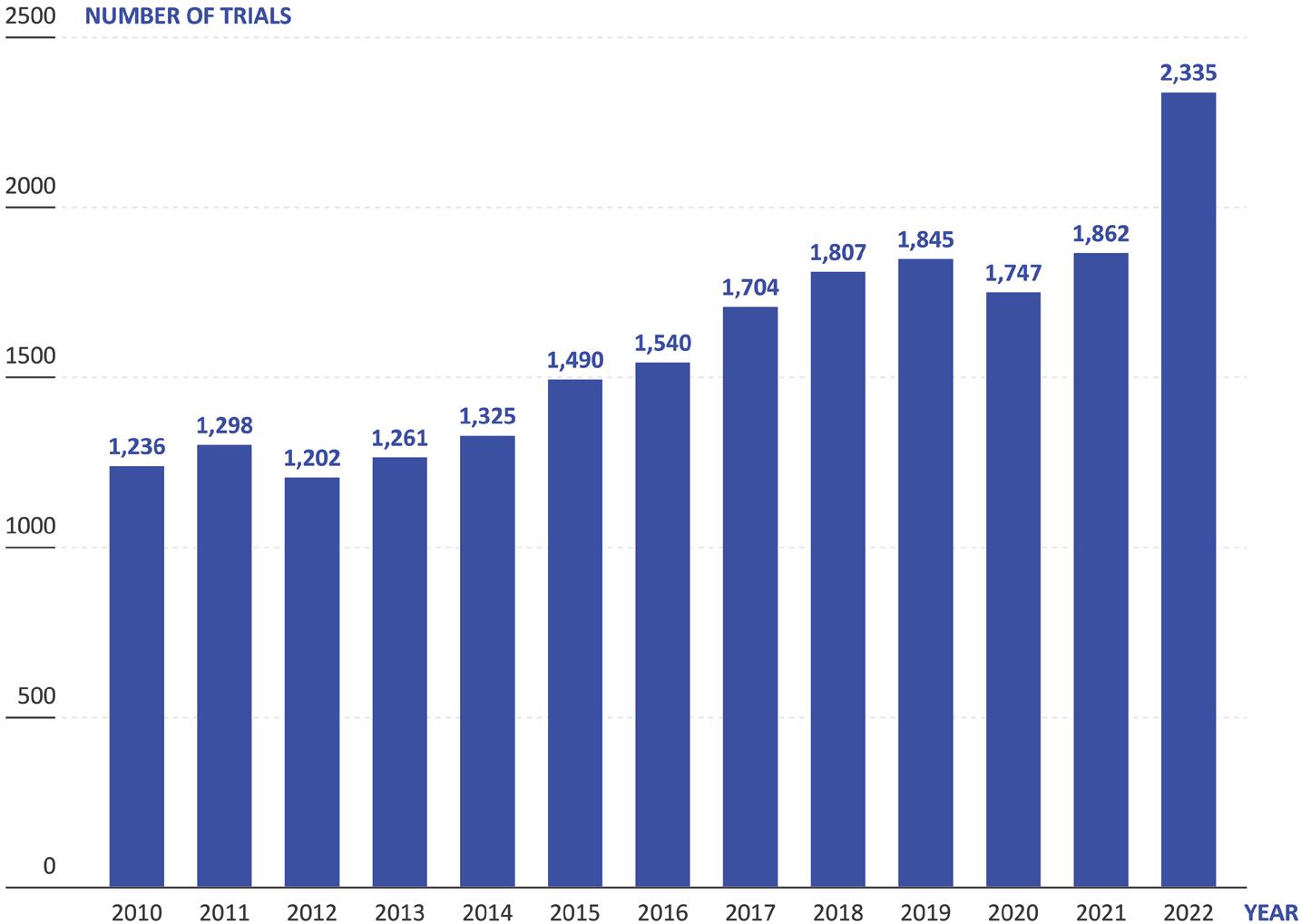
but this too makes it harder to monitor and enforce adherence. At the same time, the reduced number of patients makes high levels of adherence even more critical, as each individual patient has a greater effect on the dose-exposure-response relationship data.
The number of new drug candidates has more than tripled over the last 20 years to over 21,000 in 2023 (Pharmaprojects, 2023), which is increasing the number of ongoing clinical trials (Figure 2). Simultaneously, the healthcare
sector is finding it increasingly challenging to provide the capacity to conduct these trials, with many placed under strain from the higher healthcare needs of ageing populations and staff turnover, amongst other factors. On top of this, pragmatic clinical trials are running for longer, with more complex protocols, while sponsors are presenting ever more stringent demands on recruitment numbers and eligibility criteria. Furthermore, incentive models for healthcare professionals (HCPs) have changed, making working on clinical trials less appealing than it has been historically.


The Move to Self-Administration
Recognising the burden being placed on healthcare systems, the pharmaceutical industry has been making a concerted push towards developing therapies suitable for patients to self-administer in their own homes, alleviating the need for them to visit clinics and receive the direct attention of an HCP. Whilst this is clearly a positive and necessary move, it does make monitoring and confirming adherence even more challenging – if there is no HCP present during administration, it falls entirely on trial participants to adhere to the correct self-administration procedure and report on it.
One solution to the problem of nonadherence for self-administered therapies that has been gaining traction in the industry is the implementation of connected drug delivery devices. In principle, the idea is sound – connectivity can enable remote monitoring of trial participants, allowing researchers to gather objective data on drug usage. However, this approach is often made overcomplicated, requiring trial participants to engage with a companion app that is linked to their connected drug delivery device, which then links to their smartphone or similar device, issuing reminders along with additional features, whilst automatically logging data that it will then send back to a portal accessible by the researchers. In practice, the extra burden that using these apps presents causes some trial participants to cease using them as the trial progresses, compromising data completeness and losing any benefit to adherence they might have theoretically offered.

difference between the connected and non-connected solution – the monitoring occurring entirely in the background and not intruding on their experience.
To solve the challenge of applying connectivity to adherence monitoring, Haselmeier and AARDEX have come together to scale up a proven approach that can integrate seamlessly into the typical patient experience. Combining Haselmeier’s drug delivery engineering expertise with AARDEX’s trusted and established MEMS® system, the two companies have developed a solution for collecting reliable data on medication usage during clinical trials for single-use disposable injection devices.
(Figure 3), logging and transmitting the time and date of disposal as the patient removes and replaces the smart cap, along with tracking the total number of device disposals (Figure 4). This data is then recorded for the trial researchers, who can then respond accordingly to patients’ adherence based on objective data.
With this in mind, is connectivity a dead end in the search for a solution to the nonadherence problem? Not at all –however, it requires a different approach to yield the best results. In order to gain the benefits connectivity can offer to adherence monitoring in self-administered trials, the connectivity features need to be built into the expected use of the medication, without any additional steps. As far as the patient is concerned, there should be minimal
The Haselmeier and AARDEX solution uses a standard, non-connected singleuse injection device, such as a prefilled syringe or disposable autoinjector. The process is kept as simple as possible, with the patient using their injection device as usual. When the patient has completed their injection, they must dispose of the device in a supplied smart sharps waste container; using AARDEX’s MEMS system, connectivity is integrated into a smart cap
“Taking an approach where the connectivity is included not in the device, but instead in a smart cap on the sharps container, comes with numerous benefits over a connected-device-based approach.”
Taking an approach where the connectivity is included not in the device, but instead in a smart cap on the sharps container, comes with numerous benefits over a connected-device-based approach. Firstly, as already discussed, this method requires no additional effort from the patient, either in onboarding them on how to use a connected device or in additional steps required during self-administration – they can use a standard disposable device they are already familiar with and the adherence monitoring happens automatically without their input.
Secondly, Haselmeier and AARDEX’s MEMS smart cap saves the significant amount of time and money that would need to be invested into developing and verifying a connected device. Whilst there is certainly potential in connected devices, they add significant complications and challenges to the device design process. For example, electronic components must be included, which require materials and expertise that may not be readily available to a drug delivery device design team, as well as needing to find space in the device for a power source and connectivity infrastructure, all of which takes time and money. This complexity is particularly problematic in the early phases of drug development when speed is essential.

Figure 4: How the Haselmeier and AARDEX smart MEMS cap solution works: (1) Safety device & PFS before injection, (2) Patient removes needle cap, (3) Patient self-injects and needle withdraws into the device, (4) Sharps container with MEMS cap, (5) Patient removes MEMS cap, (6) Patient disposes of the safety device in the sharps container, (7) Patient closes sharps container and the MEMS cap automatically records date and time, (8) MEMS cap transfers data automatically to mobile app and/or MEMS reader.
Additionally, adding electronics to a drug delivery device significantly increases its carbon footprint, which, combined with the cost of electronic components, often results in the need to make the device reusable, adding use steps and further complications. By transferring the connectivity to a MEMS smart cap on the sharps container, the drug delivery device can remain simple – there is no alteration of the usability due to added electronics. Furthermore, the smart components are kept well away from any drug substance, making their reuse and recycling much easier.
Another benefit of using well-established single-use injection devices is that these are well understood by regulators, whereas questions remain when taking connected drug delivery devices through to approval. Whilst some connected devices are already approved and on the market, these are still a relatively new device category.
“Haselmeier and AARDEX’s smart MEMS cap is device agnostic and available as an off-the-shelf solution for clinical trials, enabling swift and simple integration into a clinical trial to speed up progress through development and decrease the overall time to market.”
As a result, there are significant regulatory hurdles to obtaining approval for a connected combination device, which can be reduced with Haselmeier and AARDEX’s smart sharps container solution. Haselmeier and AARDEX’s smart MEMS cap is device agnostic and available as an off-the-shelf solution for clinical trials, enabling swift and simple integration into a clinical trial to speed up progress through development and decrease the overall time to market. Because the solution does not affect the device, it can be integrated into a study without the need for extensive studies to ensure device compatibility and safety.
The Smart MEMS Cap Solution in Action To illustrate the simplicity of Haselmeier and AARDEX’s smart MEMS cap solution, consider a specific use case:
• On-site initiation : The patient is briefed on the clinical trial protocol by a researcher and receives a supply of standard disposable injection devices, likely similar to what they are already familiar with, and a sharps container with a smart MEMS cap. To the patient, there are no additional use steps compared with a traditional clinical trial using no connectivity whatsoever –everything is automatic.
• Standard use: The patient returns home and self-administers their medication on a weekly to monthly basis for the duration of the trial. The smart MEMS cap logs the time and date when the patient disposes of their injection devices without the need for further input.
• Follow-up visits : During regularly scheduled follow-up visits to the trial site, researchers can use the data collected from the smart MEMS cap to understand the patient’s adherence behaviour and provide them with data-driven feedback to ensure that they remain adherent.
• Adherence interventions: As the study progresses, researchers can optionally receive real-time adherence data via a digital portal. This data can enable them to proactively intervene if the patient is at risk of becoming nonadherent, potentially preventing discontinuation of treatment.
By combining Haselmeier’s drug delivery engineering expertise with AARDEX’s known and proven MEMS Adherence Software, the two companies have developed an elegant solution to the challenge of monitoring adherence during clinical trials. Using a smart MEMS cap to log disposal of standard single-use injection devices in a sharps container, clinical trial researchers can monitor adherence across sites in decentralised trials and identify risks in real time, enabling proactive interventions, without the need for a connected drug delivery device.
The smart MEMS Cap offers a simple and easy-to-integrate solution for pharmaceutical and biotech companies faced with the challenge of longer clinical trials with low retention rates, especially for biologics and rare and orphan drugs. AARDEX has a proven track record in the development of digital solutions for the
drug delivery industry and Haselmeier is an established and trusted drug delivery device design partner. By partnering to integrate the smart MEMS cap solution, AARDEX and Haselmeier can help ease progress through clinical trials, decrease time to market and save costs, all without impacting the device or regulatory requirements.
Haselmeier , the drug delivery device business of medmix, designs, develops and manufactures advanced drug delivery systems, including pen injection systems and autoinjectors, with a central focus on patient comfort and customers’ needs. The company has a broad portfolio of technologies and services, delivering userfriendly injection systems that enable patients to self-administer their medication reliably and accurately. Haselmeier is known for its long-standing track record in providing innovative drug delivery devices, collaborating closely with its customers in the pharmaceutical and biopharmaceutical industries. With more than 100 years of expertise in the development and manufacture of drug delivery devices, a global footprint, nearly 250 distinguished and motivated experts and more than 200 granted patents, Haselmeier remains committed to developing innovative solutions that support its customers and help improve the health of millions of people worldwide.
AARDEX Group provides digital solutions to measure and manage medication adherence. With operations in Belgium, Switzerland and the US, AARDEX develops and markets digital solutions for adherence-enhancing strategies in clinical trials, research settings and professional healthcare systems. AARDEX is the central actor of a complete ecosystem that combines its MEMS® Adherence Software with a wide range of smart packages and devices that measure patient adherence across all routes of drug administration. AARDEX’s vision is to
innovate in data-driven medication adherence solutions continuously to enhance digital therapeutics and patient empowerment.
1. Vrijens B, Pironet A, Tousset E, “The Importance of Assessing Drug Exposure and Medication Adherence in Evaluating Investigational Medications: Ensuring Validity and Reliability of Clinical Trial Results”. Pharmaceut Med, 2024, Vol 38(1) pp 9–18.
Frank Leipold is Vice-President Product Management at Haselmeier and a product and business model innovator, with a track record of developing and launching new medical devices and therapies. He led the first AI/SaMD project at a global dialysis provider, resulting in a clinical decision support system for physicians. The system’s quality and success was based on the abundance of patient data available in dialysis, reinforcing the need for collecting data at the point of care. Mr Leipold holds a BSc from TH Nuremberg (Germany) and an MBA from the University of Cambridge (UK).
Bernard Vrijens, PhD, is Chief Executive Officer at Advanced Analytical Research on Drug Exposure (AARDEX Group) and Professor of Biostatistics at Liege University, Belgium. Dr Vrijens holds a PhD from the Department of Applied Mathematics and Informatics at Ghent University, Belgium. He has pioneered a research programme focused on a simple but robust taxonomy of common dosing errors, along with exploring optimal measurement-guided medication management that can drive adherence and maintain long-term persistence. With over 100 peer-reviewed scientific papers and six patents to his name, Dr Vrijens is also a founding member of the International Society for Medication Adherence (ESPACOMP) and an active member of several EU- and US-funded collaborative projects around the theme of adherence to medication.





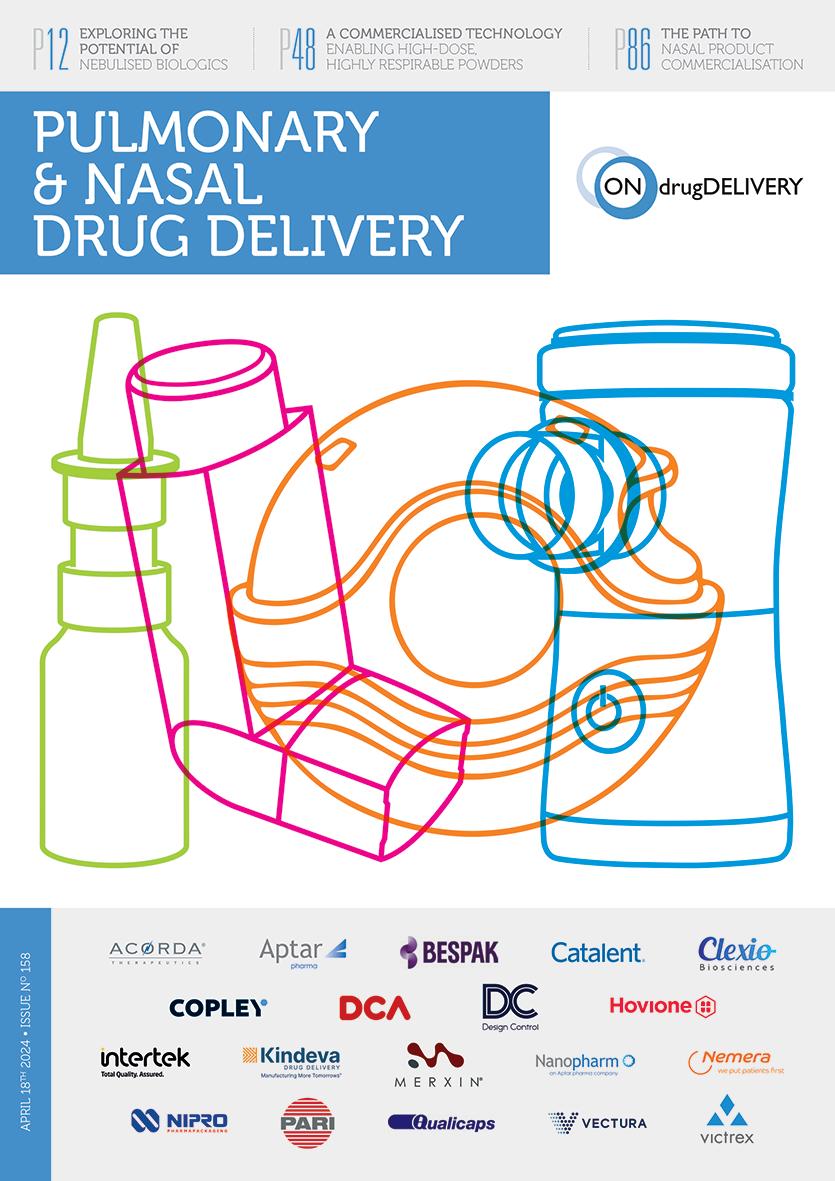
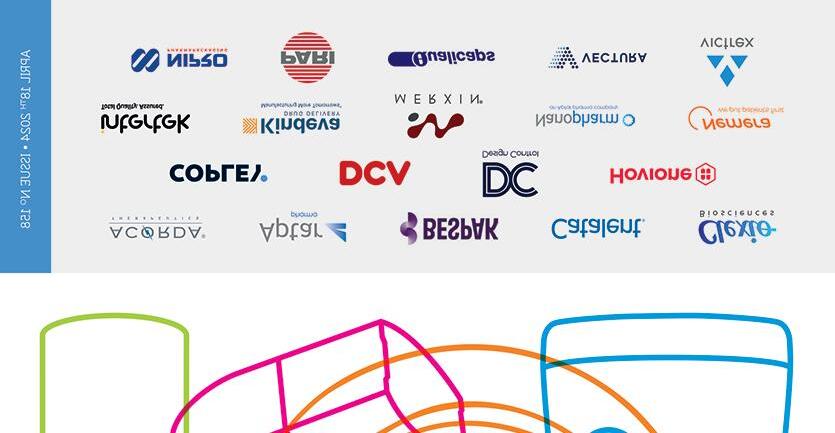

In this exclusive interview with ONdrugDelivery’s Guy Furness, Dean Minnock, PhD, of Innovation Zed discusses the company’s unique origin story and digital connectivity add-on for injection pens. He dives into the value of digital ecosystems in the drug delivery industry, both for patients and for payers, as well as sharing a look towards the future as the company prepares to launch its third-generation add-on technology – DOSE.

Dean Minnock, PhD, has been Chief Executive Officer at Innovation Zed since 2020, leading market development, research and integration of Innovation Zed’s range of connected devices. Dr Minnock has spent over 10 years working across commercial and research settings in the medical device industry. As an advocate of digital healthcare and the use of digital technology to improve health outcomes, Dr Minnock has spearheaded Innovation Zed’s transition and growth towards providing an end-to-end digital health service for both pharma and medtech.
QWhere did Innovation Zed begin and how did you get into connected drug delivery technology?
AInnovation Zed was officially formed in late 2009. We are an Irish company based in Dublin, founded by John Hughes and William Cillo. John, a serial entrepreneur and a person living with Type 1 diabetes (T1D), had a software company in Dublin and William was one of his senior software engineers. While on a business trip in the US, John doubleinjected while moving between meetings, which sent him into a severe hypoglycaemic event that required hospitalisation.
It was a very difficult and scary period for John. Upon his return to Dublin, he realised that these cheap and cheerful disposable injection pens didn’t offer a lot of value, and that he couldn’t be the only person struggling with this. He discussed them over a cup of coffee with William, who then started drawing ideas on a napkin in the restaurant. This eventually led to a portfolio of products that we have now taken to market, which was born out of a need and first-hand experience.
I’ve been with the company since 2015. Depending on how you look at it, I was either employee number one or number three, but William and John were not treating this as their day job. When I joined, I was a physiologist by trade, in the middle of my PhD, researching the molecular regulation of skeletal muscle in people with diabetes, particularly Type 1.
My research exposed me to several clinical trials and I’d had interactions with a lot of people living with diabetes. Someone on campus suggested that, since I was doing novel research, I should connect with this start-up company also based on the university campus at University College Dublin (Ireland) that was doing something with technology for people with diabetes. So, I met John for coffee. From the get-go,
I saw what the team was working towards – building a solution to empower and enhance the otherwise basic injection pen. Having worked with the diabetes community for several years, I knew it was a significant and dangerous pain point. I was immediately intrigued.
I’ve had the opportunity to grow with the company, seeing various aspects in engineering, development, marketing and business development. I’ve watched both the technology and the sector of smart and connected insulin pens grow in parallel. It’s been a fun ride.
Within the diabetes community, people are highly involved with their treatment on a very detailed level, and it has to be that way – T1D is a lifelong condition. So, there’s a drive to get the device and delivery right. In many ways, diabetes is a proving ground and inspiration for a wide variety of drug delivery systems and technologies.

We see the degree of innovation and desire for new and advanced solutions in the diabetes space time and again. It drives the field along. We’ve seen it with patch pumps, automated insulin delivery (AID) systems and now with continuous glucose monitors (CGMs) moving into Type 2 diabetes (T2D). The drive to support the diabetes community often becomes the starting point for technology that can be applied to multiple therapies and patient groups. A lot of this comes down to the overall camaraderie and community spirit of people living with diabetes, as well as those working in its treatment. It’s unrivalled in pushing the boundaries of what can be done with technology to improve lives in these areas.
QMany readers will be familiar with Innovation Zed already but, for those who aren’t, could you give an overview of the company, what you do and a rundown of your product portfolio?
AAs I mentioned before, the company was founded to deliver technology that supports injection pen users, initially
“Our mission – which we still uphold – is to empower all pen users and not leave anyone behind. We aim to provide pen users with the same technology resources and support as those using pumps and AID systems.”

in diabetes but with potential for use across many therapies. Our mission – which we still uphold – is to empower all pen users and not leave anyone behind. We aim to provide pen users with the same technology resources and support as those using pumps and AID systems.
We are an add-on device company, offering a retrofitted device for injection pens. Unlike many competitors who offer pen cap solutions, we went with something different. We kept the user in mind throughout, building our solution to work with all pens as a platform product, regardless of region or caregiver system. We went with an add-on approach rather than a fully connected pen to ensure access and flexibility of choice.
From 2010 to 2014, we focused on building our first-generation product –InsulCheck CLASSIC, which we released in the diabetes market. We learned about running a med-tech business and getting our product into the hands of those who needed it most. Initially, we adopted a business-toconsumer approach, advertising InsulCheck CLASSIC in consumer-facing articles and publications and selling it from our online store and a few select retailers.
When I joined the company in 2015, the vision for the technology was huge. We aimed for connectivity, seamlessly sharing data to mobile phones, and sought significant funding. To that end, one of the first things I achieved was securing a partnership with SHL Medical (Zug, Switzerland) in early 2016, which was transformative. SHL provided us with the vast resources, such as engineering, manufacturing and legal resources, that we needed to support our vision and the market’s shift towards connected health solutions.
We then developed our first connected device, InsulCheck CONNECT, which timestamps injection events and connects via Bluetooth Low Energy (BLE) to a paired
app. By 2020, we had our first businessto-business partnership with Menarini Diagnostics (Florence, Italy), securing distribution across 44 countries in Europe. Our goal was always to create a more powerful technology for end users.
Around the onset of covid-19, we embarked on our DOSE technology project, which represented a step up in connectivity performance, capturing not only the injection event data and but also the dial dosage value (Figure 1). This posed new challenges for us, but we kept to our principle of supporting all pen types. After three-and-a-half years of development, we are preparing for a commercial launch in 2025 in the diabetes space. This project has opened so many doors for us with respect to bespoke development of our platform across other therapy areas, allowing us to expand beyond the diabetes market. However, our focus remains firmly on the commercial launch of the DOSE technology for diabetes next year.
QWhat were the key milestones on Innovation Zed’s journey up to this point?
AThe inception of the company was in 2009, which was ahead of the curve for this sort of technology. The initial investment and real momentum came around 2011, including moving to our first office in the start-up hub at University College Dublin. From there, the development and release of InsulCheck CLASSIC came in 2012. There was a period of searching for different business models and opportunities, but we were operating direct-to-end-user sales until 2015–2016. Around that time, we’d surpassed just over a 100,000 sales of the original device. The business-to-consumer model required quite a lot of effort in packing and shipping, but reaching that number was a significant milestone for us. In 2016,
“In 2016, the biggest milestone was our partnership with SHL Medical. That was our first opportunity to step up to become a much more robust and well-funded company.”
the biggest milestone was our partnership with SHL Medical. That was our first opportunity to step up to become a much more robust and well-funded company. We were able to hire strategically and grew from there. We then set about building InsulCheck CONNECT, our first connected product, which we launched in 2020.
The next milestone came in 2023. As we drew to the end of developing our DOSE technology, we achieved our CE mark. This was a very big milestone because the regulatory landscape has been evolving, and we’ve had to grow and adapt to it.
QStaying with the DOSE technology, could you go into more detail about possible expansions into other therapeutic areas beyond the diabetes launch in 2025?
AWe’ve developed a technology approach based around an add-on device for injection pens that uses a multisensor approach for monitoring the pen characteristics and determining what those translate to in terms of dosage and injection events. Because of this generic platform approach, our technology is applicable to a wide variety of pens. To date, we’ve not found an injection pen that we can’t support with our technology.
“Because of this generic platform approach, our technology is applicable to a wide variety of pens. To date, we’ve not found an injection pen that we can’t support with our technology.”
Over the past 12 months and looking forwards, we’ve been putting a lot of energy into understanding different markets, therapies and disease areas that use similar injection devices to diabetes that require daily, multiple daily or weekly injections that could benefit from our technology. This has involved having multiple conversations with both medtech and pharma companies. Medtech organisations are interested because we can offer a connected solution for their injection devices without changing the functionality of the pen, which would require them to go through regulatory processes again.
Pharma companies, on the other hand, are very interested in ensuring that the molecule they are offering in these delivery devices is being provided with this type of data and connectivity solution. We are dealing with both, and the areas finding most traction at the moment include fertility treatment, human growth hormone (HGH) and weight management. These areas are very exciting for us.
Fertility treatment and HGH are neck and neck as our top two therapy areas outside of cardiometabolic therapies. However, weight management is also emerging as a strong area, especially with drugs such as glucagon-like peptide 1 (GLP-1) and their benefits for T2D. There is a huge drive and opportunity for us to support injection devices for GLP-1 use in T1D, T2D and weight management.
QConsidering connectivity in drug delivery more broadly, why do you think digital ecosystems are important and what’s Innovation Zed’s contribution to the ecosystem approach?
AThat’s an excellent question, which could probably be a whole article on its own. Digital ecosystems are vital, and their importance has been
demonstrated time and time again through research and commercial launches with ecosystem-centric approaches. We’ve really seen their success in practice.
The key features of an ecosystem environment are its reduction in burden and increase in confidence for the most important person involved – the user. In drug delivery, of course, it’s the user who needs to use this particular drug or is on this particular therapy cycle for their own health purposes. Any reduction in burden and an increase in confidence, along with an overall improvement in mental state and quality of life, are the biggest benefits of a digital ecosystem.
There are ripple effects that are equally important to their loved ones, such as the ability to have remote monitoring opportunities. For example, a parent can see that their child has taken their injection and how it balances with their CGM data versus their insulin.
From a healthcare point of view, the real value lies in the financial aspect. Physicians and caregivers can see how well their prescriptions or recommendations are working and can monitor and change them in almost real time, ensuring the best care at all times. Above that, the eventual payer, whether that’s insurance in the US or government-backed systems in Europe, can ensure that they are getting the most value for the system they have in place.
With a digital ecosystem, people can lead better, healthier and happier lives, with their treatment plans optimised for their needs. At the same time, this approach minimises the longerterm negative outcomes caused by poor health management. Financially, it’s very interesting and exciting for the payer as these costs are kept to a minimum, and the expense put into day-to-day treatment pays dividends down the line. I believe that, 10 years from now, we won’t be able to imagine going back to a situation where care doesn’t involve a digital ecosystem.
How are we at Innovation Zed contributing to that? Our goal is to remain applicable and agnostic with our hardware and technology solutions so we can offer a plug-and-play solution for multiple ecosystems – we don’t have to be a bespoke solution for just one. If you have the capacity to connect via BLE, you can work with our product and collect beneficial drug and injection data into your ecosystem to maximise the benefits and outcomes.
We’ve seen that through our agnostic, platform-based, one-size-fits-all solution. It puts us in a very interesting position because we can have multiple relationships and collaborations with various vendors and ecosystems. Innovation Zed’s platform is completely interoperable.
In recent years, with the rising success and popularity of digital ecosystems, we’ve put more emphasis and focus on software and software builds. We’re looking at how we can leverage the ecosystem itself to maximise what we can get out of our technology. Instead of just saying, “Here is our device and the data it offers”, we’ve started to contribute a lot from our first-hand experience with users and ourselves. We’re now heavily investing in software creation to provide a software development kit to ecosystem providers around features and functionality that will enhance and maximise the offering of our hardware, adding significant value to the ecosystem overall.
The DOSE technology is a thirdgeneration product for us, and it’s very reliant on software at multiple stages –from concept to development to maintenance. We’ve built a lot of software to support the product and, eventually, we realised that we needed to start offering that side of our expertise as well. Once we came to that realisation, it was a simple transition because we’ve already done a lot of the work. We’re servicing our future by enabling and backing up our hardware through our software expertise.
Q“I believe that, 10 years from now, we won’t be able to imagine going back to a situation where care doesn’t involve a digital ecosystem.”
What’s the potential of Innovation Zed’s technology and what are your future plans?
AInnovation isn’t just in our name, it’s in everything we do. We view ourselves as a technology engineering team working on exciting technology solutions for injection delivery devices. We love working with this technology and we’re always learning. Even though
we’ve come to the conclusion of the DOSE technology’s development, we’re already well into the exploratory R&D phase of what a DOSE technology version two would look like.
Our focus is remaining squarely on injection devices for the moment, that’s where our expertise lies and we’re doubling down on that. So we don’t have any plans to expand into inhalers or other types of drug delivery for now. We’ve built up over the years around connectivity and multiple-sensor approaches for reliable and robust solutions in tracking, monitoring and sharing data to optimise user outcomes –and that’s where we’re staying.
We have several new projects currently in the pipeline. It won’t be too long until you hear about the next big thing we plan to bring to market. We like keeping our engineers busy and innovating all the time. We’ve got an exciting road map ahead.
QAre there any final comments you’d like to add for our readers?
AOne last thing is that we’ve found that an intermediary step in many relationships with pharma and medtech is that we can advance our activities to get a working version of our platform technology on these delivery devices much sooner in the development pipeline than they are expecting, making our device platform applicable for clinical studies, clinical data and usability projects. In so doing,
“We’ve
built up over the years around connectivity and multiple-sensor approaches for reliable and robust solutions in tracking, monitoring and sharing data to optimise user outcomes – and that’s where we’re staying.”
we’ve unearthed a new market where we can quickly get our partner’s injection devices connected, transforming them into a useful solution for clinical studies.
We can get a device connected in a matter of months, allowing medtech and pharma to leverage that opportunity in clinical research. We’ve found that this adds a lot of value as we’ve expanded to other therapy areas outside diabetes. We support the general life sciences and clinical research elements of projects. Our product can get devices connected almost in the blink of an eye to align with clinical and research needs. This is becoming another exciting part of what we do.
Innovation Zed designs. develops and manufactures medical technologies –primarily connected and intelligent add-on devices for injection pens. The company is dedicated to helping multidose injection pen users. Understanding the challenges they face worldwide, Innovation Zed’s focus is to support all injection pen
users regardless of their pen of choice. Its InsulCheck product range was developed to address the needs of users, caregivers and providers by simplifying and improving therapy management.
Contact:
Andrew Fitzpatrick Business Operations and Marketing Manager E: andrewf@innovationzed.com
Innovation Zed Ltd 2 Dublin Landings North Wall Quay Dublin 1 Ireland D01 V4A3
www.innovationzed.com

* using Forest Stewardship Council® certified recycled paper, vegetablebased inks, biodegradable laminates and carbon balanced materials offset via the World Land Trust™ following ISO140001 processes.
** by DHL using GoGreen Plus carbon insetting of at least 30% through the use of Sustainable Aviation Fuel (SAF), a biofuel substitute for traditional jet fuel, produced from renewable sources. Mailed to individual readers outside the UK by DHL using GoGreen, which offsets 100% of CO2 emissions.
In this Expert View, Kamaal de Silva, Principal Mechanical Engineer at Springboard, looks at the future of closed-loop insulin delivery systems and how the management of Type 1 diabetes is developing in the digital era.
Closed-loop insulin delivery systems, also known as artificial pancreas systems, are currently in an exciting phase of technological innovation and transformation. These innovations are being driven by enhancements in sensing and delivery technology, promising clinical trial results and new regulatory approvals.
The development and provision of these systems is currently focused on patients with Type 1 diabetes (T1D). The immune system of these patients attacks the β cells in the pancreas, which create insulin, a hormone that enables the transport of glucose from the bloodstream to the rest of the body. Most of the insulin produced by a healthy β cell is in response to the rising levels of glucose in the bloodstream at mealtimes (Figure 1). Some insulin is also produced by the body during chewing in preparation for a blood sugar spike.1
Patients with T1D must inject insulin to manage their blood glucose levels over the course of the day. With a manual system, calculation of the required insulin dose can be a complex process, requiring patients to constantly monitor glucose levels and use that information to plan and execute calculations at specific times.3 The effect of a certain dose of insulin even
“Artificial pancreas systems aim to bring management of T1D into the digital era.”
has its own day-to-day variability, which is difficult to predict. Most patients with T1D are therefore unable to achieve their recommended glycaemic targets.4
Artificial pancreas systems aim to bring management of T1D into the digital era. The essential components are a continuous glucose monitor (CGM), an insulin pump and a control algorithm (Figure 2). Most systems are known as “hybrid”, meaning that even though the insulin rate is adjusted automatically, users still have some interaction with the system, for example, counting and entering mealtime carbohydrates.5
CGMs measure glucose levels in the interstitial fluid between cells in the abdomen or back of the upper arm, normally via an enzymatic reaction. There is an inherent delay of approximately


Kamaal de Silva
Principal Mechanical Engineer
T: +44 0 1223 856445
E: kamaal.desilva@springboard.pro
Springboard Pro
St John’s Innovation Centre
Cowley Road
CB4 0WS
United Kingdom
www.springboard.pro

10 minutes7 in the reading when measuring blood glucose in this way, which affects the accuracy of the reading and therefore the performance of the control algorithm.
As shown in Table 1, the newest CGMs can achieve a mean absolute relative difference (MARD) of 8% when compared with a calibrated reference, report glucose levels every minute and do not require user calibration with a fingerstick reading. The impressive accuracy of current monitors is the result of yearon-year performance improvements, as can
be seen in Figure 3, where a MARD of <10% is considered accurate enough for insulin dose calculations.8 It is currently
“The impressive accuracy of current monitors is the result of year-on-year performance improvements.”

unclear whether the accuracy of new sensors will continue to improve or begin to flatten out as we approach the limit of the technology.
Further research in this area is ongoing to ensure that the accuracy of the CGM is maintained over a range of use cases. For example, compression of the device when sleeping and long periods of aerobic exercise have been shown to produce erroneous readings. There are also efforts to reduce the effects of various interfering substances, such as ascorbic acid, hydroxyurea and others yet to be identified.10
The control algorithm can either be integrated into the pump itself or located on a separate device, which can even be a smartphone. The safety of the control system is paramount, as delivering too much insulin can cause hypoglycaemia, which can quickly become life threatening if untreated.
The three main types of control algorithms used in approved systems are:
• Proportional-integral-derivative (PID) :
One of the most common control methods, a predefined PID equation, uses an error value in parallel to make corrections. A pump using this algorithm is therefore more dependent on live blood sugar readings to make frequent adjustments. The current level of insulin in blood plasma has a suppressive effect on the amount of new insulin secreted by healthy ß cells, which is too quick for a PID system to mimic using interstitial blood sugar readings from a CGM. PID algorithms usually incorporate an insulin feedback (IFB) algorithm to account for this.11
• Fuzzy logic (FL): Used in Medtronic’s (MN, US) new MiniMed 780G in conjunction with PID control, FL mimics human vagueness in decision making when working with incomplete data. This improves the algorithm’s response to unexpected situations, such as illness, exercise or unplanned meals.12
• Model predictive control (MPC) : Generally regarded as a more advanced method of control, where new predictive models over a defined “horizon” are rapidly generated and updated as blood sugar levels change. MPC is therefore considered preferable for artificial pancreas systems that have large time delays or predictable dynamics. However, as with PID, the algorithm may require additional controls to deal with disturbances that break from the models.
Most of the artificial pancreas systems in Table 2 are now approved in both the EU and US. Medtronic, the first entry into the market, operates within a closed
ecosystem, whereas newer entries by competitors typically use Dexcom (CA, US) and/or Abbott (IL, US) CGMs. This potentially gives users more choice and reduces any possibility of geographical supply limitations. However, Medtronic’s ownership of the whole ecosystem could allow it to be closer to the sensor technology and implement improvements in sensor technology directly into their own algorithm.
With the systems shown in Table 3, placing the controller on a separate device increases the potential for device interoperability, but there are other trade-offs. In the case of Diabeloop’s (Grenoble, France) DBLG1, the user must carry another handheld device with them. As an Android/iOS app, CamDiab’s (Cambridge, UK) CamAPS FX does not encounter this problem for most users,
but could leave diabetes management vulnerable to typical problems with apps, such as issues arising when using specific smartphones and OS versions.
There are currently thousands of people around the world using some form of DIY closed-loop system.13 The movement has centred around the hashtag #WeAreNotWaiting, with the intention of improving the availability and affordability of artificial pancreas systems. For example, in the US a new insulin pump and transmitter can cost up to US$7,400 (£5,815), not including $420 for a 30-day supply of sensors.14 In 2023 it was announced that hybrid closed-loop systems would be made available for UK NHS patients over the next five years.15
“There are currently thousands of people around the world using some form of DIY closed-loop system.”
The three main DIY artificial pancreas systems in use today are:
• OpenAPS: The first system to be developed in 2016 using a Raspberry Pi to control a set of now unsupported Medtronic pumps released between 2003 and 2010 (Figure 4)
• Loop: A similar approach but designed to work on an iPhone. It is compatible with the same Medtronic pumps as OpenAPS with the addition of the Omnipod
• AndroidAPS: Which has the same core functionality of OpenAPS but can be installed on an Android smartphone.
Interestingly, these systems are not based on any of the aforementioned advanced control algorithms, but rather designed to emulate the user’s manual decision-making process when using a bolus pump. The systems can also be configured to provide the exact amount of automation and responsiveness needed for a specific user. Some studies have reported similar performance for key metrics, such as time in range and HbA1c levels, when compared with approved hybrid closed-loop systems.17 However, creating a working DIY system requires some technical know-how.
In 2023, a diabetes non-profit charity, Tidepool (CA, US), received clearance from the US FDA to proceed with Tidepool Loop. This is an effort to bring an easier to use but open-source system into regulatory control. Unfortunately, the system is currently not available for use as it requires pump manufacturers to gain FDA clearance for their use with an alternative controller.18
The artificial pancreas systems of the future could develop in several ways. Control algorithms could improve, helping to overcome the time delay in sensing blood sugar levels, as well as the absorption and action of insulin. Machine learning and artificial intelligence (AI) could play a key role in generating bespoke predictive models. Also, the introduction of ultra-rapid-acting insulin analogues, such as Fiasp (Novo Nordisk) and Lyumjev (Eli Lilly), could increase system responsiveness.19
Patients with T1D are also deficient in the production of other hormones that control blood sugar, such as glucagon. Glucagon increases blood sugar levels from stores, so could allow for more aggressive insulin dosage during spikes while reducing the risk of hypoglycaemia (Figure 5). Subtle pancreatic regulators, such as


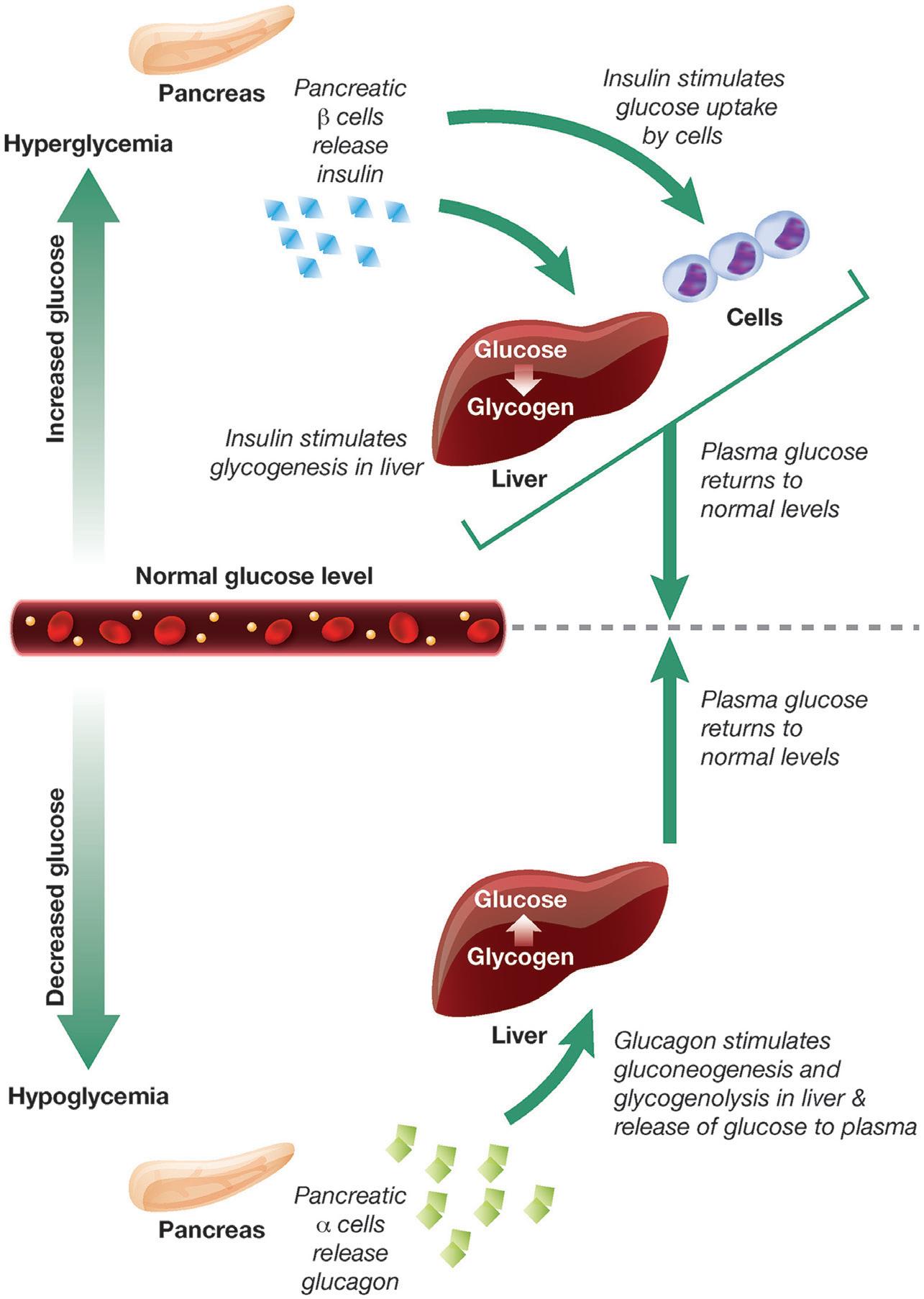
glucose levels.20
amylin analogues (pramlintide) and GLP-1 agonists, could also be added to the mix. Every new development in the artificial pancreas story has been an exciting step forwards, and it is clear that this trend will continue long into the future.
Springboard is a technology and design consultancy. The company creates and develops new products and technology, including products in the field of medtech and drug delivery devices, assisting companies in resolving technical challenges and decreasing time to market. Springboard is part of the Sanner Group, which provides high-quality, agile and cost-effective manufacturing for medical devices, including drug delivery devices.
1. Eliasson B et al, “Cephalic phase of insulin secretion in response to a meal is unrelated to family history of type 2 diabetes”. PLoS One, 2017, Vol 12(3), Article e0173654.
2. Thompson R, Christie D, Hindmarsh PC, “The role for insulin analogues in diabetes care”. Current Paediatrics, 2006, Vol 16(2), pp 117–122.
3. Vloemans AF et al, “Youth With Type 1 Diabetes Taking Responsibility for Self-Management:
The Importance of Executive Functioning in Achieving Glycemic Control”. Diabetes Care, 2019, Vol 42(2), pp 225–231.
4. Davies M, “The reality of glycaemic control in insulin treated diabetes: defining the clinical challenges”. Int J Obes, 2004, Vol 28(S2), pp S14–S22.
5. “Story of Discovery—Artificial Pancreas for Managing Type 1 Diabetes: Cutting-edge Technology 50 Years in the Making – NIDDK”. National Institute of Diabetes and Digestive and Kidney Diseases, Jan 2017.
6. Boughton CK, Hovorka R, “Advances in artificial pancreas systems”. Sci Transl Med, 2019, Vol 11(484), Article eaaw4949.
7. Schmelzeisen-Redeker G et al, “Time Delay of CGM Sensors: Relevance, Causes, and Countermeasures”. J Diabetes Sci Technol, 2015, Vol 9(5), pp 1006–1015.
8. Kovatchev BP et al, “Assessing Sensor Accuracy for Non-Adjunct Use of Continuous Glucose Monitoring”. Diabetes Technol Ther, 2015, Vol 17(3), pp 177–186.
9. Bailey TS, Alva S, “Landscape of Continuous Glucose Monitoring (CGM) and Integrated CGM: Accuracy Considerations”.
Kamaal de Silva, Principal Mechanical Engineer, is an experienced engineer who has led design and development projects at Springboard on a range of drug delivery devices, including infusion pumps, on-body delivery systems, autoinjectors, pen injectors and soft mist inhalers. Mr de Silva is committed to developing innovative hardware and software-based solutions that enhance the user experience and improve healthcare outcomes. He studied Mechanical Engineering at Imperial College London (UK). The knowledge he has accrued throughout his career has led to a comprehensive understanding of design, manufacturing and scientific principles that he can leverage to create robust, risk averse designs.
Diabetes Technol Ther, 2021, Vol 23(S3), p S-5.
10. Friedman JG et al, “Use of Continuous Glucose Monitors to Manage Type 1 Diabetes Mellitus: Progress, Challenges, and Recommendations”. Pharmgenomics Pers Med, 2023, Vol 16, pp 263–276.
11. Ruiz JL et al, “Effect of Insulin Feedback on Closed-Loop Glucose Control: A Crossover Study”. J Diabetes Sci Technol, 2012, Vol 6(5), pp 1123–1130.
12. Mauseth R et al, “Use of a ‘fuzzy logic’ controller in a closed-loop artificial pancreas”. Diabetes Technol Ther, 2013, Vol 15(8), pp 628–633.
13. “OpenAPS Outcomes”. Web Page, OpenAPS, accessed May 2024.
14. Dermawan D, Kenichi Purbayanto MA, “An overview of advancements in closed-loop artificial pancreas system”. Heliyon, 2022, Vol 8(11), Article e11648.
15. “New ‘artificial pancreas’ technology set to change the lives of people having difficulty managing their type 1 diabetes”. NICE, Jan 2023.
16. Williamson-Lee J, “Diabetes patients’ DIY solutions are still the standard of care”. Mashable, October 2021.
17. Kesavadev J et al, “The Do-ItYourself Artificial Pancreas: A Comprehensive Review”. Diabetes Ther, 2020, Vol 11(6), pp 1217–1235.
18. Downey L et al, “A European regulatory pathway for Tidepool loop following clearance in the United States?”. Diabet Med, 2024, Vol 41(4), Article e15246.
19. Hartnell S et al, “Closed-loop technology: a practical guide”. Practical Diabetes, 2021, Vol 38(4), pp 33–39.
20. Haedersdal S et al, “The Role of Glucagon in the Pathophysiology and Treatment of Type 2 Diabetes”. Mayo Clin Proc, 2018, Vol 93(2), pp 217–239.
Here, Stefanie Seiler, PhD, Product Manager Digital Health, and Ventsislav Dobrev, Global Lead Digital Health, both at Ypsomed, discuss self-care challenges for patients and highlight how Ypsomed Digital Health’s solutions can solve them while also delivering meaningful business insights for pharmaceutical companies.
In today’s healthcare landscape, pharmaceutical companies have an opportunity to support patients in a more personal way through digital health solutions. The repercussions of subpar self-care management, such as therapy drop-offs, low patient engagement and low therapy adherence, emphasise the urgent need to empower individuals in their treatment journeys. The potential to improve therapy outcomes by supporting patients in managing their self-care is huge, as an average of 70–80% of patients with long-term conditions opt for self-care in addition to receiving professional care at hospitals.1
“The repercussions of subpar self-care management, like therapy drop-offs and low patient engagement, emphasise the urgent need to empower individuals in their treatment journeys.”
Patients who struggle to manage their complex diseases may find that digital selfcare tools provide the skills they need to monitor and control their treatments more efficiently, as well as to access reliable information and training. Moreover, fully integrated digital health solutions can assist pharmaceutical companies in unlocking valuable insights for R&D, shortening market access timelines and improving commercial success.
MAKING SELF-CARE SIMPLER AND EASIER
Self-care encompasses many components beyond just medicine and medical devices themselves and can be described as the ability of individuals to promote and
maintain their own health, while coping with their illness.1 For self-injection therapies, this means that patients need to self-inject correctly, self-monitor their health and become self-aware of changes to their condition so that they can react appropriately and involve healthcare professionals as needed. Digital health solutions can facilitate this by delivering training and guidance about self-care tools and increasing health literacy through easily accessible, accurate and appropriate information. Education in the use of self-care tools is the foundation that enables patients to play an active role in improving their own health.1 Only selfconfident and self-sufficient patients benefit from a better quality of life and the best possible therapy outcome while performing self-care at home.
Ypsomed has been at the forefront of self-care innovation for 40 years, making it simpler and easier by delivering simple-touse and reliable products to pharmaceutical companies that improve patients’ quality

Dr Stefanie Seiler
Product Manager Digital Health
T: +41 34 4244 351
E: stefanie.seiler@ypsomed.com

Ventsislav Dobrev
Global Lead Digital Health
T: +41 76 6111 415
E: ventsislav.dobrev@ypsomed.com
Ypsomed AG Brunnmattstrasse 6
CH-3401 Burgdorf Switzerland
www.ypsomed.com/yds
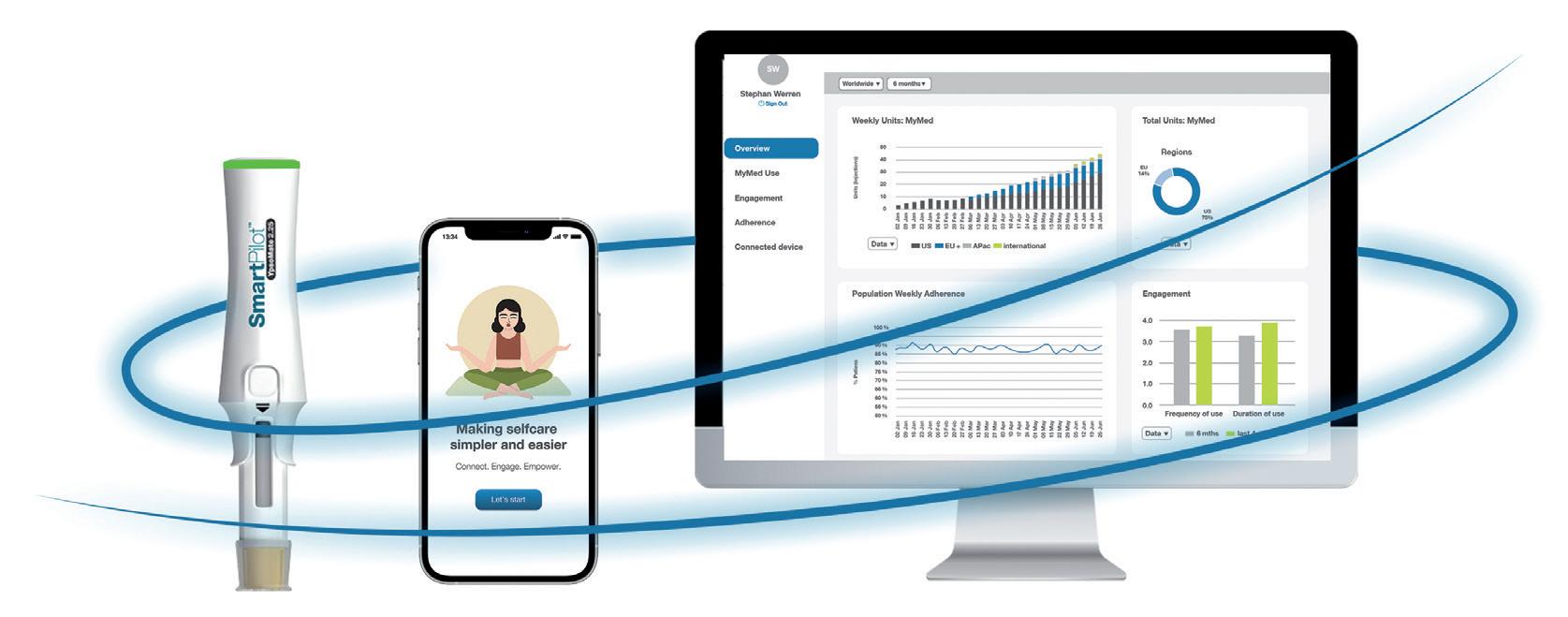
“The future of self-care is on.”
of life. Ypsomed Digital Health’s solutions consist of seamlessly integrated connected devices, patient apps and data analytics tools (Figure 1). Ypsomed’s fully integrated digital ecosystem supports pharmaceutical companies in delivering self-care solutions to patients that improve adherence rates, therapy outcomes and quality of life, while also unlocking business-changing insights for themselves. Ypsomed has achieved this by expanding its experience in self-care with S3 Connected Health (Dublin, Ireland) and Sidekick Health (Kópavogur, Iceland), two leading digital health partners – the future of self-care is on.
Key Self-Care Challenges for Patients “I was panicked when I picked up the medication! There was no one to explain it. I have to do everything. I’m sick, and then I have to play my own nurse? I am lost”, “I had to search for information about what to do if anything went wrong by myself. How can we be expected to do this alone?” and “I’m not taking this medication anymore and I haven’t told my doctor because he won’t agree with me” are just a few statements from patients reflecting the difficulties that countless individuals living with chronic conditions experience while navigating their self-care journeys.2,3
To ensure that Ypsomed understands the various patient needs and delivers products that resonate with the target audience, the company regularly engages with patients to understand their
experiences in self-care with and without digital solutions. Ypsomed uses techniques such as prototype testing, cognitive walkthroughs, think-aloud interviews, formative human factors testing and clinical feasibility studies in standard of care. The results from these studies, together with literature-based research, have enabled the company to identify five key patient challenges in self-care:1–3
• Complex treatment regimens overwhelm patients
• Lack of information and education hinders correct self-care and building of correct self-injection rituals
• Low self-efficacy due to lack of training
• Low self-confidence fuelled by fear of forgetting something
• Negative mindset towards therapy caused by injection anxiety and psychological distress.
Understanding patient needs helps Ypsomed to identify potential product improvements, such as interface and navigation adjustments for step-by-step injection support, logbook access and overall therapy management. These findings are systematically integrated into the company’s product development process, from start to finish, by shaping design choices and feature implementations –ensuring that its solutions meet the diverse needs of patients.
Ypsomed Digital Health equips patients with the appropriate tools, such as (connected) self-injectors, connected add-ons and a patient app, empowering them to manage their complex therapies. User-friendly interfaces allow patients to
access learning platforms, resources and helpful guidance, supporting the seamless integration of self-care into their lives. The patient app has an integrated behavioural engine that allows for personalised training to improve selfefficacy and smooth onboarding to the therapy. Interactive step-by-step injection guidance during the injection process allows for proper application and provides real-time feedback of handling errors that may occur, in addition to giving patients the self-confidence they need to manage their therapy. The app supports patients in finding their own injection ritual by offering different tools, such as relaxation techniques, breathing exercises or music, to overcome potential injection fear. This personalised support on an as-needed basis provides consistent reminders and support throughout the treatment, thus leading to a positive mindset over the course of the therapy.
Not all patients wish to self-inject and self-manage their therapy, either because of their condition or by choice. This is where caregivers can step in and play a pivotal role in at-home care. Some conditions are complex, and friends or family members may choose to share the burden of caring for a loved one. However, ensuring therapy adherence and correct administration requires a significant amount of co-ordination. Allowing for simple care co-ordination, Ypsomed Digital Health’s solutions connect all the caregivers for each patient. Everyone involved can see symptom progression and logbooks, have access to disease or therapy information and step-by step user guidance, and receive treatment reminders.
Leveraging an Existing Fully Integrated Digital Health Ecosystem
Digital health solutions are ideally well adopted by patients, caregivers and healthcare providers, and facilitate R&D, market access and commercial success for pharmaceutical companies, ultimately simplifying life for everyone involved. To achieve this, all tools – such as drugs, devices, patient apps and data analytics – need to be fully integrated into a single ecosystem. If not delivered by
“Ypsomed delivers fully integrated end-to-end digital health solutions, including connected devices, patient apps, and data analytics, allowing pharmaceutical companies to focus on their core business.”
one provider, pharmaceutical companies can waste a significant amount of time, resources and money, and are faced with huge co-ordination efforts to develop and maintain such an ecosystem. Moreover, these multi-provider setups increase the risks for lifecycle management, which can include maintenance issues and unclear roles for end-to-end solution verification, validation and operations. Ypsomed delivers fully integrated end-to-end digital health solutions (Figure 1), including connected devices, patient apps and data analytics, allowing pharmaceutical companies to focus on their core business. Ypsomed Digital Health’s solutions are based on a diseaseagnostic platform that is scalable and can be customised to brands, diseases and patients’ specific needs while ensuring efficient lifecycle management and maintenance.
Facilitating R&D with Robust and Objective Data for Evidence Generation
The rapidly growing adoption of pragmatic study designs and decentralised clinical approaches – expected to be incorporated in 90% of studies in 2024 – depicts the current trend for faster and lower cost clinical trials that allow patients to participate from wherever they are without the need to travel.4 Ypsomed Digital Health’s solutions support robust data collection during these trials by capturing objective injection data, such as date, time and results of the injection, on the connected device. Through the digital ecosystem, these data are related to other data points, such as therapy schedules and recordings of side effects, delivering information that can be analysed for the early detection of potential safety issues and adherence rates. In the case of low adherence, corrective measures such as automated reminders, personal follow-ups, or additional training and education can be implemented to reduce the risk of losing patients during follow-ups.
By studying the relationship between drug exposure and response, the dose regimen and benefit-risk ratio can be optimised. Additionally data captured from electronic
patient-reported outcomes and quality of life questionnaires can help understand the drug’s impact on patients’ lives beyond traditional clinical endpoints. The data can be leveraged for trial design planning by, for example, identifying profiles for highrisk participants or participants that are more likely to respond to the treatment,5 ultimately generating evidence faster and at a lower cost with improved data quality.5
Facilitating Market Access with Robust Real-World Data for Health Economics
Digital health solutions may provide data that supplement clinical trial evidence and fill the gaps in understanding drug performance in diverse patient populations or under real conditions, thereby accelerating market approvals. In 2017, for example, the US FDA used real-world evidence in the form of a historical control arm to grant marketing approval of Merck and Pfizer’s avelumab for treating Merkel cell carcinoma. Also, in 2019, Pfizer’s palbociclib, previously only approved for treating women with ER+/HER2-breast cancer, was approved in men based on real-world data related to its off-label use among men.6
Moreover, the data can be used in health economic models to demonstrate a drug’s value in improving patient outcomes, reducing healthcare use and lowering overall costs, thereby supporting reimbursement decisions by payers. The agreement between UPMC Health Plan and Boehringer Ingelheim is one example of a value-based pricing model, linking the reimbursement of Boehringer Ingelheim’s Jardiance® (empagliflozin), an oral Type 2 diabetes medicine, to the total costs of care for all patients treated for diabetes.7 In 2022, 58% of the surveyed payers in the US had at least one outcome-based contract in place, where reimbursement is tied to predefined clinical outcomes, performance metrics or therapy adherence.8
Facilitating Commercial Success and Insights into Patient Population
Behaviour and Market Dynamics
By incorporating digital health solutions into their commercial and launch strategies, pharmaceutical companies can enhance the value proposition of their drugs, differentiate themselves in the market and, ultimately, improve patient outcomes, leading to better brand loyalty, greater commercial success and sustained market presence.
The insights gathered by digital health solutions can help pharmaceutical companies to understand patient journeys by analysing real-world behaviour. Learning how patient behaviour can differ within a specific subset of the population facilitates tailoring solutions to specific patient populations for better solution
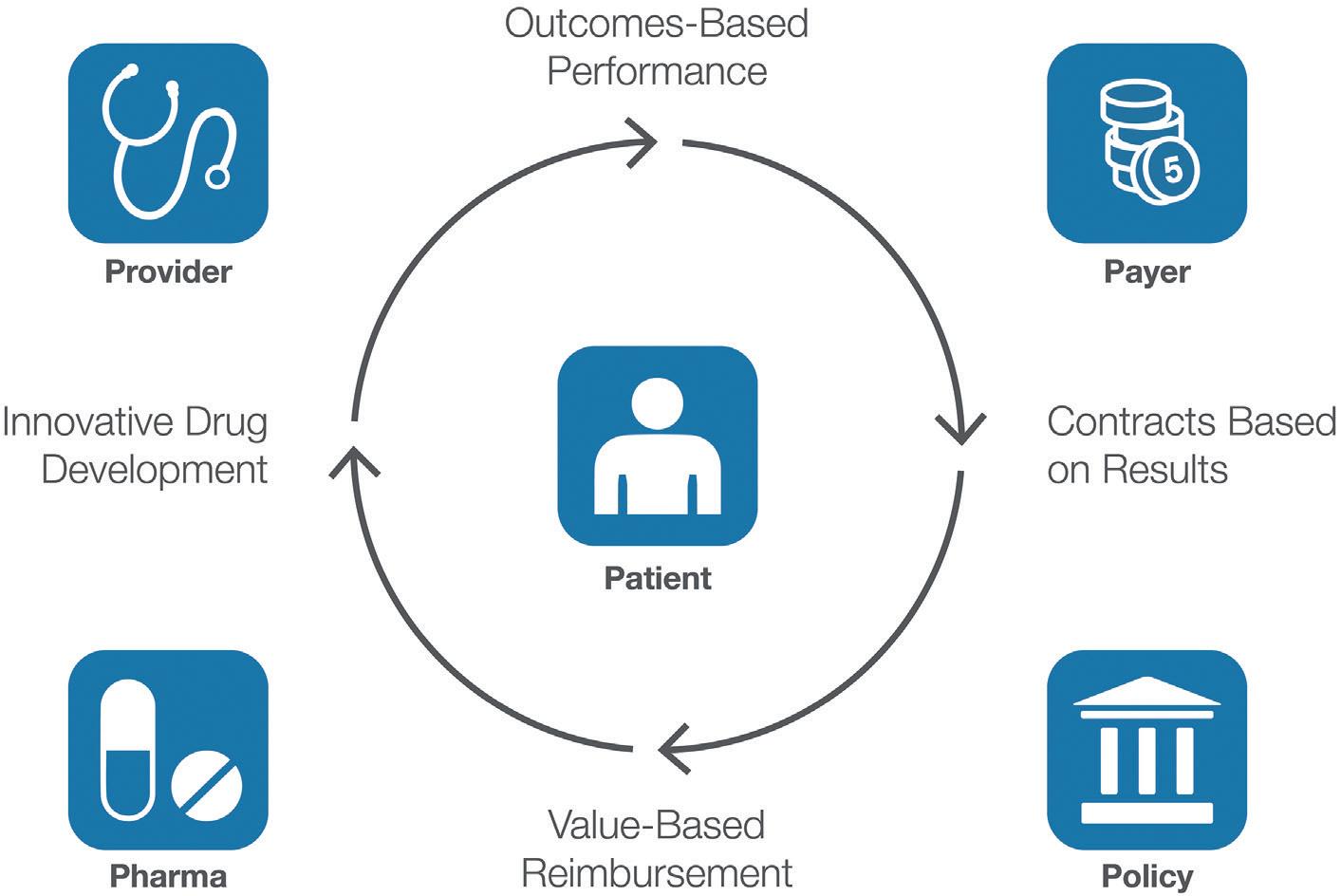
adoption and higher therapy adherence. Moreover, understanding geographical differences in solution usage and adoption can help apply best practices from one area to another, ultimately generating more revenue for the asset.
Digital health solutions have great potential to support patients in a more personal way, empowering their self-care journeys. However, for digital health solutions to be economical, the drugs, devices, apps and data analytics need to be connected in a fully integrated ecosystem that is scalable and provides benefits to all stakeholders, including patients, healthcare professionals, caregivers, pharmaceutical companies, payers and policy makers (Figure 2).9
With 40 years of experience, Ypsomed is a global pioneer for the development and manufacturing of innovative, simpleto-use, reliable self-injection devices and digital health solutions for pharmaceutical and biotech companies, which contribute significantly to the success of therapies –making self-care simpler and easier.
Ypsomed supplies customisable product platforms for autoinjectors for prefilled syringes in 1 and 2.25 mL format, disposable pens for 3 and 1.5 mL cartridges, and reusable pens that include automated injection mechanisms.
The injection systems are developed and manufactured in Switzerland with strong
in-house competencies covering concept and product development, toolmaking, injection moulding and automated assembly. Ypsomed is ISO 13485 certified, and all processes are run according to design control and cGMP guidelines, with operational quality assurance and control experts on-site at each location. Ypsomed’s devices are supplied to global markets including the US, Europe, Japan, China and India.
1. “Self-care for health and well-being”. WHO, Apr 2024.
2. “Human Factors studies for Ypsomed Digital Health”. Proprietary Research, Ypsomed.
3. Schiff et al, “Chronic Disease and Self-Injection: Ethnographic Investigations into the Patient Experience During Treatment”.
Rheumatol Ther, 2017, Vol 4(2), pp 445–463.
4. “A look ahead: Decentralized clinical trials in 2023”. ObvioHealth, accessed May 2024.
5. “Using artificial intelligence and machine learning in the development of drug and biological products”. US FDA, Nov 2023.
6. Dang A, “Real-World Evidence: A Primer”. Pharmaceut Med, 2023, Vol 37(1), pp 25–36.
7. “UPMC Health Plan and Boehringer Ingelheim Announce Innovative, Value-Based Agreement”. Press Release, UPMC Health Plan, Sep 2018.
8. Shvets E et al, “Survey Finds 58% of Payers Use Outcomes-Based Contracts”. Avalere, Apr 2023.
9. Voelter V, “It Takes Five to Tango”. Grammar Factory Publishing, Apr 2021.
Stefanie Seiler, PhD, is Product Manager Digital Health at Ypsomed. She has eight years’ experience in healthcare focusing on clinical research, real-world data and digital health solutions. In her previous position, she closely collaborated with all stakeholders of the healthcare system to develop a nationwide real-world data platform to improve therapy outcomes for patients. Dr Seiler holds a PhD in Biomedical Sciences from the University of Bern, Switzerland.
Ventsislav Dobrev, Global Lead Digital Health, is a pharmacist by training with specialisations in digital health, health informatics and population health. Mr Dobrev has more than 20 years of experience in healthcare across different domains and an intrinsic passion as to how technology can empower patients for self-care.

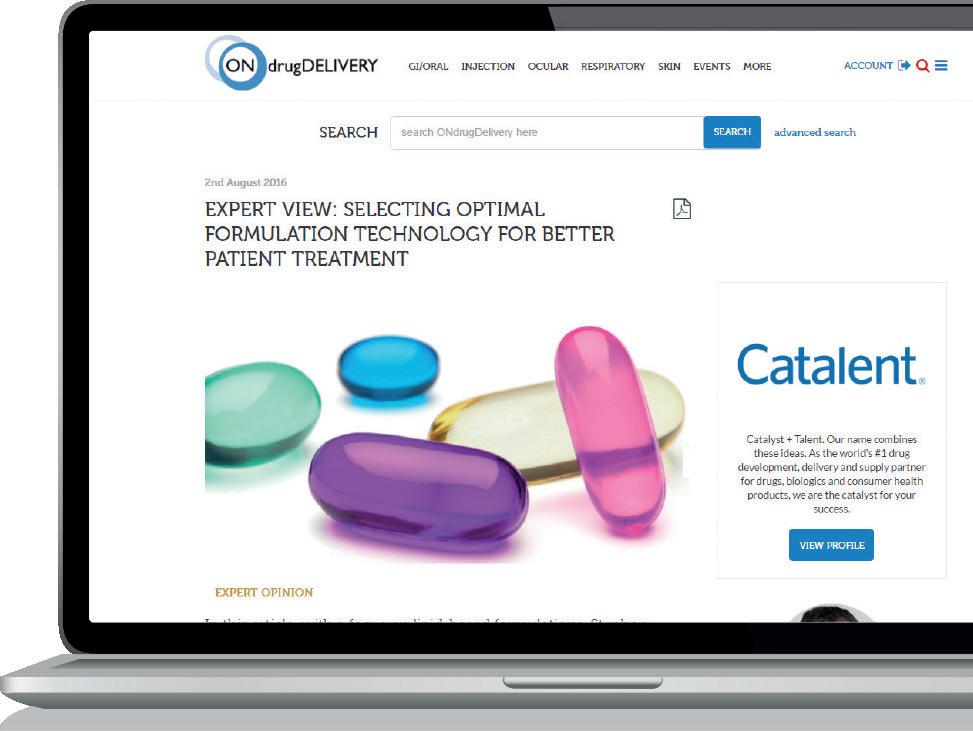
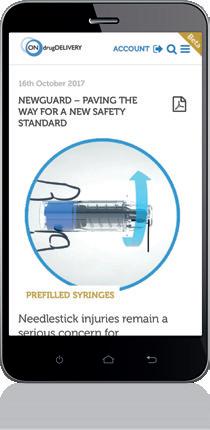



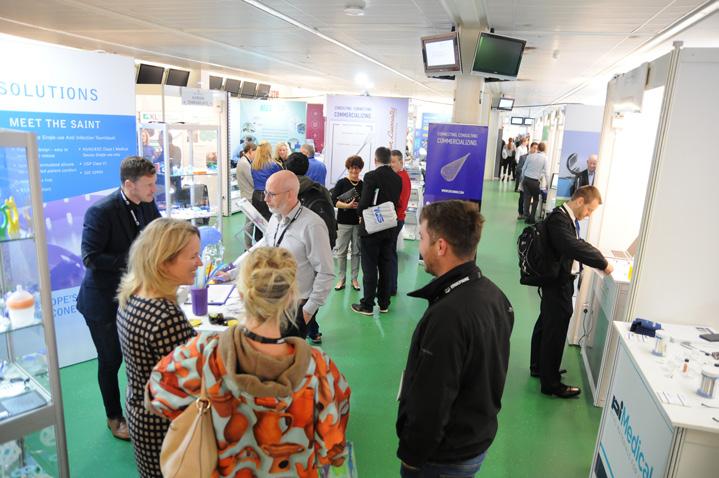

Achieve
Allow
Access
Scale
In this article, Sylvia Kaiser-Kershaw, Global Senior Marketing Manager NFC-HF-IOT Solutions and Susanne Hazrati, Global Marketing Manager UCODE RAIN RFID, both at NXP Semiconductors, and Sebastian Muenscher, Product Manager RFID/NFC Solutions at Schreiner MediPharm, examine how digital twinning, based on smart and secure wirelessly connected tags and labels, can transform healthcare processes.
The digitalisation technique known as digital twinning gives physical healthcarerelated devices, such as injector pens, metered dose inhalers and prefilled syringes, a unique digital identity that can be tracked in the cloud. Digital twins are created using smart tags and labels, equipped with wireless connectivity, which securely capture, read, control and store data locally on the device and transmit it to the cloud where it can be analysed, stored and shared in real time.
In manufacturing and supply chain management, digital twins can increase the efficiency of everyday operations, including automatic data collection, item-level identification, track and trace, inventory updates and analytics. Digital twins can also deliver benefits at the point of care, whether in a medical facility or the patient’s home, to help with tasks such as product authentication, tracking dosages and monitoring expiration dates to ensure proper use and patient safety.
The smart tags and labels that enable digital twinning typically use RAIN radio frequency identification (RFID) and/or nearfield communication (NFC) for wireless connectivity. The decision of when to use which technology, either on its own or in combination, largely depends on the use case, reading distance, functionality and the number of items being read.
RAIN RFID, which is a familiar part of automated logistics and inventory tasks, is primarily used for long-range bulk reads. Dedicated RAIN RFID readers can accurately identify over 1,000 items per second at a distance of up to 10 m or more and without line of sight. NFC, on the other hand, which is perhaps best known for enabling contactless payments and as a standard feature in today’s smartphones, is used for individual reads and interactions that happen at close range. A hybrid technology, high-frequency (HF)-NFC, combines vicinity-range applications of up to 1.5 m, using HF readers, and NFC functionality for data exchange at close range.
A smart tag, based on RAIN RFID, NFC or a combination of the two, is added to a traditional marking label or embedded in the product itself. The tags are mostly
“Recent advancements include crypto-secure authentication tags, which provide high-level data protection, and smart-sensor tags, which can detect condition changes and events, such as opening detection, pressure or fill level.”
Sylvia Kaiser-Kershaw
Global Senior Marketing Manager NFC-HF-IOT Solutions E: sylvia.kaiser-kershaw@nxp.com
Susanne Hazrati
Global Marketing Manager UCODE RAIN RFID E: susanne.hazrati@nxp.com
NXP Semiconductors
Mikron-Weg 1 8101 Gratkorn Austria www.nxp.com
Sebastian Muenscher Product Manager RFID/NFC Solutions E: sebastian.muenscher@ schreiner-group.com
Schreiner MediPharm, a business unit of Schreiner Group Bruckmannring 22 85764 Oberschleissheim Germany
www.schreiner-medipharm.com


passive, meaning they draw power from the reader and do not require a battery, and can be designed to support a variety of functions, security levels and memory sizes. Recent advancements include cryptosecure authentication tags, which provide high-level data protection, and smart-sensor tags, which can detect condition changes and events, such as opening detection, pressure or fill level. For designs requiring continuous condition monitoring or nondependency on a mobile phone, battery power is usually necessary.
In manufacturing and the supply chain, digital twinning based on RAIN RFID enhances supply track and trace and inventory management. NXP’s UCODE line of RAIN RFID tag products supports a wide range of customer requirements, from storing the electronic product code to adding user memory, conductive tag-tamper features and authentication.
The data stored on RAIN RFID labels, such as product name, manufacturer, batch number and expiry date, are read automatically either individually or in
“By providing precise inventory counts in real time, automated inventory tracking also helps to detect and reduce drug diversion.”
bulk using simple handheld or specialty readers and matched with a database. This enables inventory tracking and provides transparencies about medicines that are approaching their expiration date and need to be restocked.
A recent study by Zebra revealed that 74% of UK and US hospital leaders acknowledge that cancellations of procedures or surgeries due to out-of-stock, low-stock or lost supplies are a significant problem. Additionally, 77% of them agree that clinical staff spend too much time searching for supplies when needed, and 75% say it is a challenge to recover all recalled or expired items.1
Containers equipped with RAIN RFID labels can be automatically read at various stations, on the factory floor, in a warehouse or on the hospital ward, for live
monitoring and control of the logistic material and product flow. With a readrate accuracy of up to 100%, products that have been picked and placed are captured automatically, so current inventory levels are consistently stored in a database. By providing precise inventory counts in real time, automated inventory tracking also helps to detect and reduce drug diversion.
Prefilled syringes tend to use materials, including thermoplastic polymers, polypropylene or glass, that can affect the range and read performance of a RAIN RFID tag. Size is a consideration, too, since a small syringe limits space for the RAIN RFID tag and tight curvature can reduce performance. The dielectric properties of medications contained in the syringe can present challenges, too, since water-based active ingredients have a negative impact on radio transmission. Positioning of the RAIN RFID label and its integrated inlay need to reflect the type of liquid and fill level of the syringe.
Schreiner MediPharm has developed a RAIN RFID label solution for syringes that addresses these issues (Figure 1). Used with a cap adapter, which equalises the diameter differences of the syringe body and cap, the label wraps around the syringe body and the cap adapter. When the syringe is opened, the label’s integrated perforation provides irreversible visual evidence of the event. At the same time, NXP’s labelintegrated UCODE tag also records digital evidence of the event upon tag readout, so it is easier to automate inventory control and track syringes based on opening status. The syringe label uses a flexible, yet highly robust, construction suitable for high-speed application, making it suitable for use as part of the normal primary container label process within pharmaceutical production – eliminating the need for application by hand at the point of use. Each label is equipped with a special structure that absorbs mechanical stress and impacts, thereby protecting the integrated inlay from damage and functional failure, so the label can be read reliably from production to final use.
CASES FOR NFC
NFC helps to support the point of use, either in a medical facility or at home, in what is referred to as the “last patient mile”.
“Automated communication, enabled by NFC, can assist patients interactively in administering their medication, making it easier to adhere to a therapy plan.”
Interactive Patient Assistance
Automated communication, enabled by NFC, can assist patients interactively in administering their medication, making it easier to adhere to a therapy plan (Figure 2). Using NFC technology, Schreiner MediPharm has developed a label for Ypsomed’s YpsoMate autoinjector, a disposable single-use injection device. The label serves as a communication interface between the injector and the SmartPilot™, a reusable add-on for the autoinjector with embedded sensor and identification technology. The smart device can identify and authenticate the medication automatically and check its expiry date. The injection date and time, as well as the delivered dose, are tracked and transmitted to the patient’s smartphone app via Bluetooth Low Energy. The patient is guided interactively through the injection process, assisted in using the autoinjector correctly in real time or informed about inconsistencies – for example, in the event of deviations from the therapy plan or an accidental attempt at a double injection.
Cryptographic Fraud Protection and Web Authentication
The WHO identifies counterfeit drugs as one of the urgent healthcare challenges globally.2 To combat the increasingly serious problem of counterfeit medicines, NFC security tags provide authenticity, integrity or even confidentiality to protect tagged products against falsification, cloning, unauthorised access and other fraud. NXP’s NTAG and ICODE DNA authentication tag chips are equipped with standard-based AES-128 cryptography and can be pre-provisioned with secrets in trusted environments for secure product integration.
NXP’s security-certified NTAG DNA tags feature a secure unique NFC (SUN) authentication message for app-less web authentication, which changes dynamically upon each tap. Only an original tag can


generate a valid SUN message and each tagged item can be reliably authenticated. In this way, inspectors, healthcare staff and consumers can verify product authenticity using their smartphones without downloading a special app. Patients can also take advantage of on-demand access to product information and dosage instructions, including videos, helpful digital tools and more.
Medication Authentication with Offline Device
NFC also lets patients verify the authenticity of pharmaceuticals without using a smartphone. A reusable injection device or pen, for example, can be equipped with a small-footprint NFC reader that communicates directly with an NFC tag in or on the medication’s container. The NFC transaction can be used to assure the originality of the consumable at the point of use, even by using an advanced
mutual authentication scheme for offline authentication, and can also confirm the type of drug and its batch number, check whether it is within its expiry date or register dosage events.
First-Opening Detection
Knowing that a medication has its original factory seal intact helps ensure that the product is genuine and has not
“Knowing that a medication has its original factory seal intact helps ensure that the product is genuine and has not been modified after leaving the factory.”

been modified after leaving the factory. Electronically tamper-evident NFC tags can monitor opening in one of two ways. With a “tamper-loop” tag, the product label or seal is equipped with a conductive loop that, when broken, triggers the NFC tag to irreversibly write a “once opened” status to its memory and sends the status change to the cloud, all when tapped with a smartphone. With a capacitive tamperproof tag, tamper evidence can be integrated into the product itself – as part of the physical bottle closure, for example. The tag measures capacitance changes, comparing them with preconfigured limits to sense opening, and provides a readout of opening status when tapped with a smartphone. Both types of tamper-evident tags work with web-based authentication without an app.
NXP’s NFC chips are part of a tamperevident label Schreiner MediPharm has developed for autoinjectors (Figure 3). The label not only confirms originality and sends a message when first opened but can also be configured to provide additional information, such as product details, demo videos and links to therapy-supporting apps. This type of tamper-evident label can migrate to NXP’s NFC DNA technology so as to add highly secure encryption technology, which enables advanced digital integrity protection. By adding geotracker linking, the label-integrated tag can also be used to protect supply-chain integrity by detecting grey-market activities in local markets.
Increasingly common chronic conditions, such as diabetes, asthma, chronic obstructive pulmonary disease and arthritis, as well as mental disorders, typically require longterm use of medications. It is not always easy for patients to stay on track with their treatment regimens, especially if they are taking multiple medications for a range of conditions, and many patients struggle with the directions and schedules for proper dosing. The WHO estimates that adherence to chronic medication is only 50%.3
Using an NFC-enabled smartphone to tap an NFC-tagged drug-delivery device, such as an autoinjector or inhaler, can help patients adhere to medication schedules. To help manage asthma treatments, for example, Smart Respiratory Products (London, UK) uses an add-on smart cap that goes over a metered dose inhaler. A connected NXP NFC tag has a wired link to a microcontroller that captures pressure
“Having access to real-time data about the frequency and quantity of dosages can help clinical researchers reduce instances of non-adherence and improve the quality and reliability of the data they use in their studies.”
input. Patients can reliably track their inhaler use by pressing the button on the cap to inhale and then tapping the inhaler to a smartphone, which records the exact time of the dosage. Results are made available in a companion app on the NFC smartphone, so the patient knows how many puffs have been taken and when, as well as when the inhaler is running low.
Smartphone apps can be configured to provide other options, too, such as linking to medication guides, usage videos and other helpful information, such as side effects, or establishing daily treatment reminders.
Having access to real-time data about the frequency and quantity of dosages can help clinical researchers reduce instances of nonadherence and improve the quality and reliability of the data they use in their studies.
Schreiner MediPharm has developed a Smart Blister Wallet (Figure 4) that can track pills individually as they are removed from their blister cavity. Configured to accept blister packs with up to 64 cavities, the Smart Blister Wallet is a cardboard box equipped with integrated conductive lines
and an electronic sensing unit that includes an NTAG tag. When a pill is ejected, an electronic track is broken, triggering the onboard sensor to store the exact time and data at which the pill was removed and the location. Collected sensor data can be read out using a reader or a smartphone with an installed app. Data from the Smart Blister Wallet can be viewed locally on the device or sent to a cloud database for storage and further analysis. Notifications can also help remind patients when their next dose is due, and a message or alert can be sent when doses are missed. Manufacturers can process the Smart Blister Wallet as usual, filling it with standard bifold or multifold blister packs. The package design can also be customised and, thanks to roll-to-roll processes, the level of quality remains consistent, even at higher volumes.
Digital twins represent an important trend in the digitalisation of healthcare. NXP is at the forefront of this trend, developing advanced security, wireless connectivity, intelligent processing and
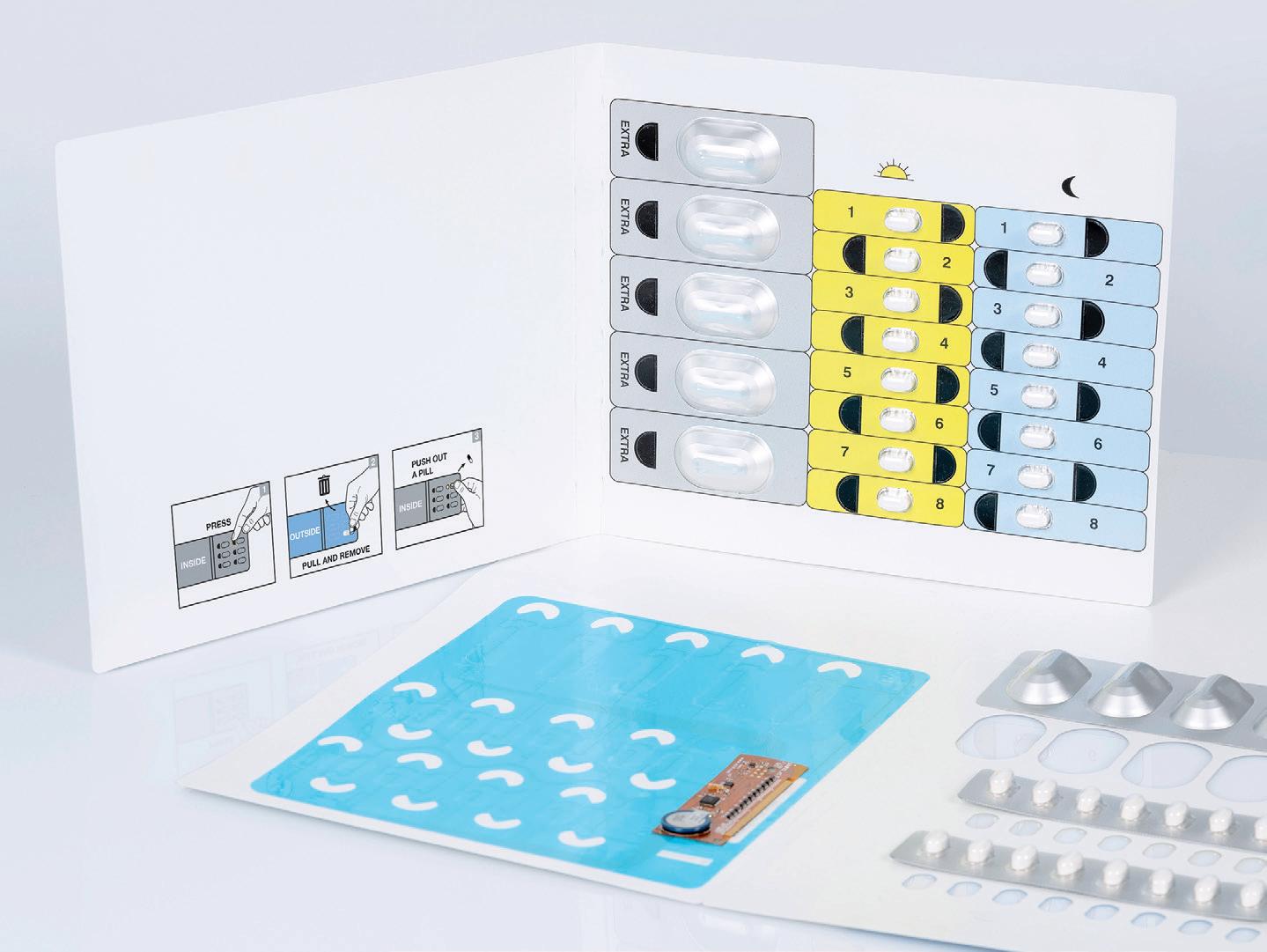
smart sensing solutions that enable a secure, flexible approach to digital twinning. NXP NFC-RFID solutions enable smart tags, labels and packaging solutions for patient-safe medication and medical devices, such as those provided by Schreiner MediPharm, that optimise healthcare processes, enhance product safety and help avoid medication errors.
NXP Semiconductors is a trusted partner for innovative solutions in the automotive, industrial and Internet of Things, mobile and communications infrastructure markets. The company’s “Brighter Together” approach combines leading-edge technology with pioneering people to develop system solutions that make the connected world better, safer and more secure. The company has operations in more than 30 countries and posted revenue of US$13.28 billion (£10.44 billion) in 2023.
Schreiner MediPharm, a business unit of Schreiner Group, is a global leader in the development and manufacture of innovative specialty labels with value-added benefits for the healthcare industry. The product portfolio includes labels with integrated hangers, detachable parts and multi-page labels. Additionally, Schreiner MediPharm offers syringe labels with integrated needle protection, and tamper-evident and counterfeiting protection solutions, as well as RFID/NFC labels and smart packaging solutions. These products simplify dispensing and administering of pharmaceuticals, enhance drug safety and clearly reduce process costs. Thanks to its strong solutions expertise and specialised know-how, Schreiner MediPharm is a highly capable development partner and reliable quality supplier to leading pharmaceutical companies worldwide.
1. “Hospital Materials Management Vision Study”. Web Page, Zebra, accessed May 2024.
2. “Substandard and falsified
medical products”. Web Page, WHO, accessed May 2024.
3. “Failure to take prescribed medicine for chronic diseases is a massive, world-wide problem”. WHO, Jul 2003.



Sylvia Kaiser-Kershaw is a Global Senior Principal Marketing Manager in the Connectivity & Security business line at NXP Semiconductors. She is in charge of product marketing for NFC-HF-IOT technologies, such as NTAG and ICODE, as well as healthcare market segment development. As part of her role, she helps develop smart solutions to enhance product and patient safety, protect supply chains and optimise processes. Mrs Kaiser-Kershaw has over 20 years of experience in strategic and operational marketing, working across a variety of industries, including personal care, healthcare and insurances. She holds an MBA degree.
Susanne Hazrati is Global Marketing Manager UCODE and is responsible for the implementation of RAIN RFID technology in emerging markets. Having worked at NXP for almost a decade, Mrs Hazrati is experienced in various passive technologies and well connected through the ecosystem value chain. She has a master’s degree in Innovation Management. Mrs Hazrati’s present position, which involves developing new markets for the contactless technology, lets her build on her passion for innovation. Her overall aim is to make lives more efficient and convenient.
Sebastian Muenscher is Product Manager RFID/NFC Solutions at Schreiner MediPharm, a business unit of Schreiner Group based in Oberschleissheim near Munich in Germany. Schreiner MediPharm develops and produces innovative, multifunctional specialty labels with value-added benefits for the pharmaceutical industry. Mr Muenscher is in charge of developing new markets and smart solutions for various applications in pharmaceuticals and medical devices. He has a solid background in RFID, smartcard and security applications, with a track record of 20 years of professional experience in product management and marketing. He has a Master of Engineering degree.
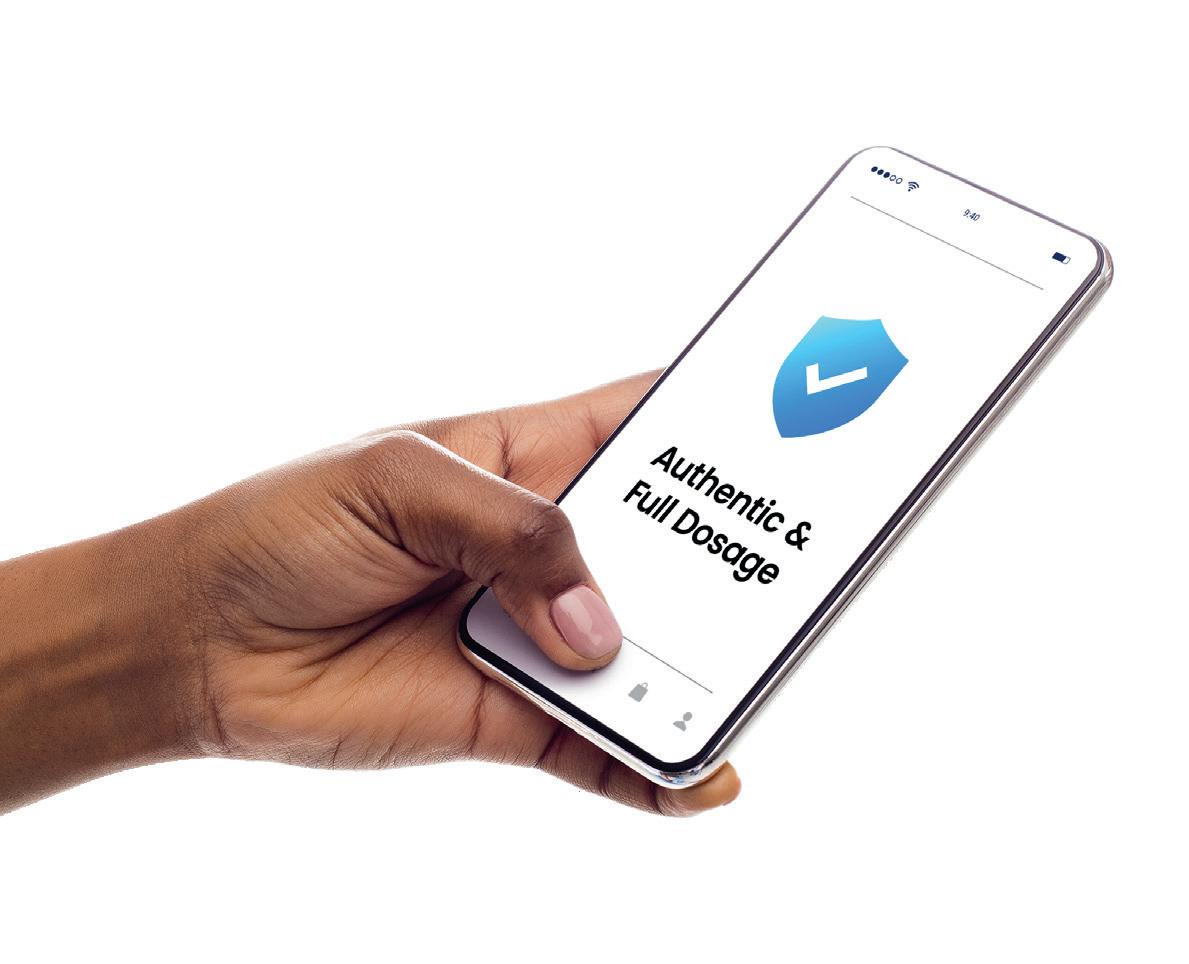
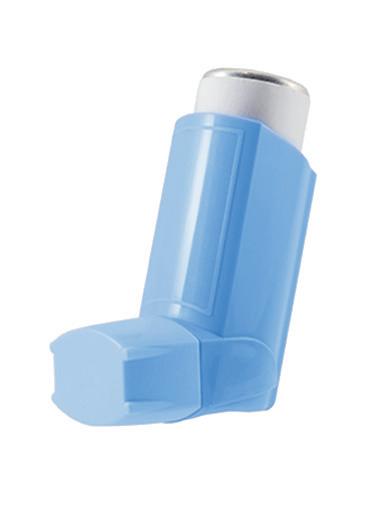





NXP offers advanced NFC, RFID, and IoT solutions for the pharmaceutical industry, medical technology, and clinical research.
Together, we make life a little healthier. For more information, visit: nxp.com/healthcare
As a long-standing semiconductor expert and a trusted supplier of reliability and quality, we support our customers at every point, from initial idea to commercial production.
We use the latest advancements in connectivity, security, and edge technologies to help optimize processes, support medication adherence, and enhance product and patient safety.

